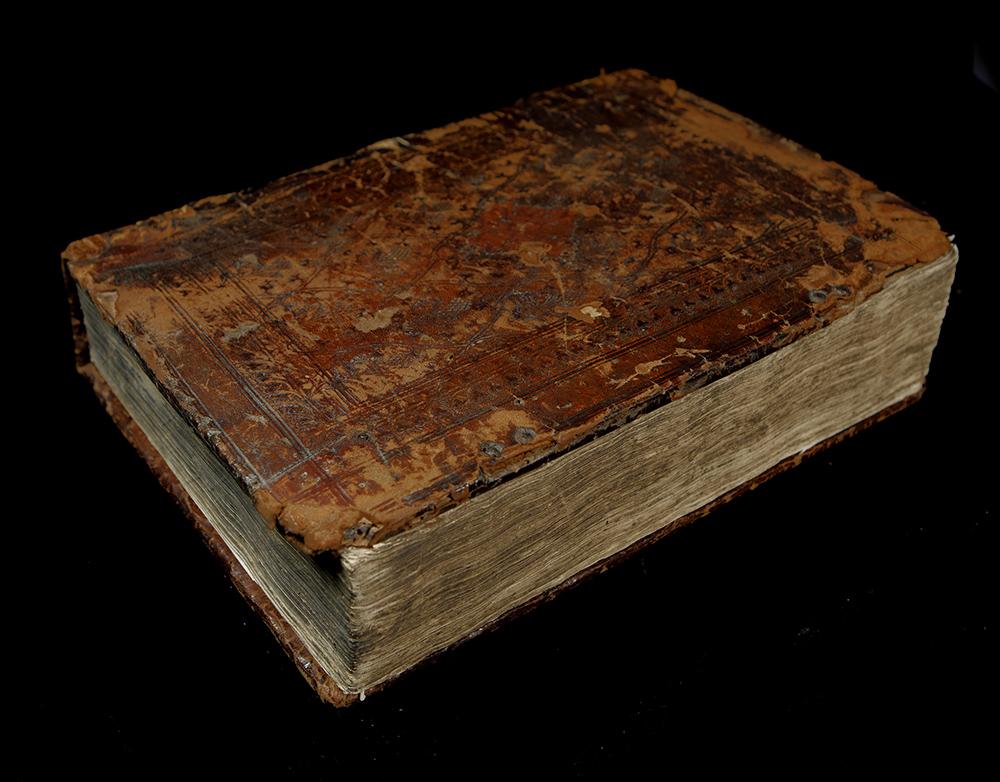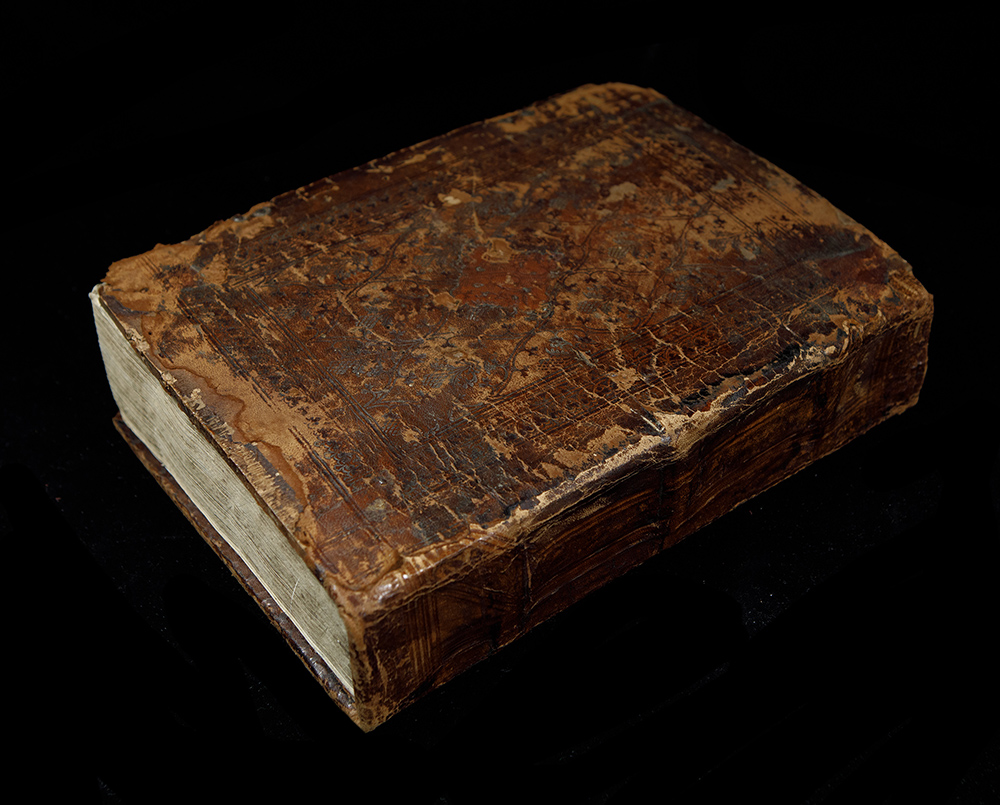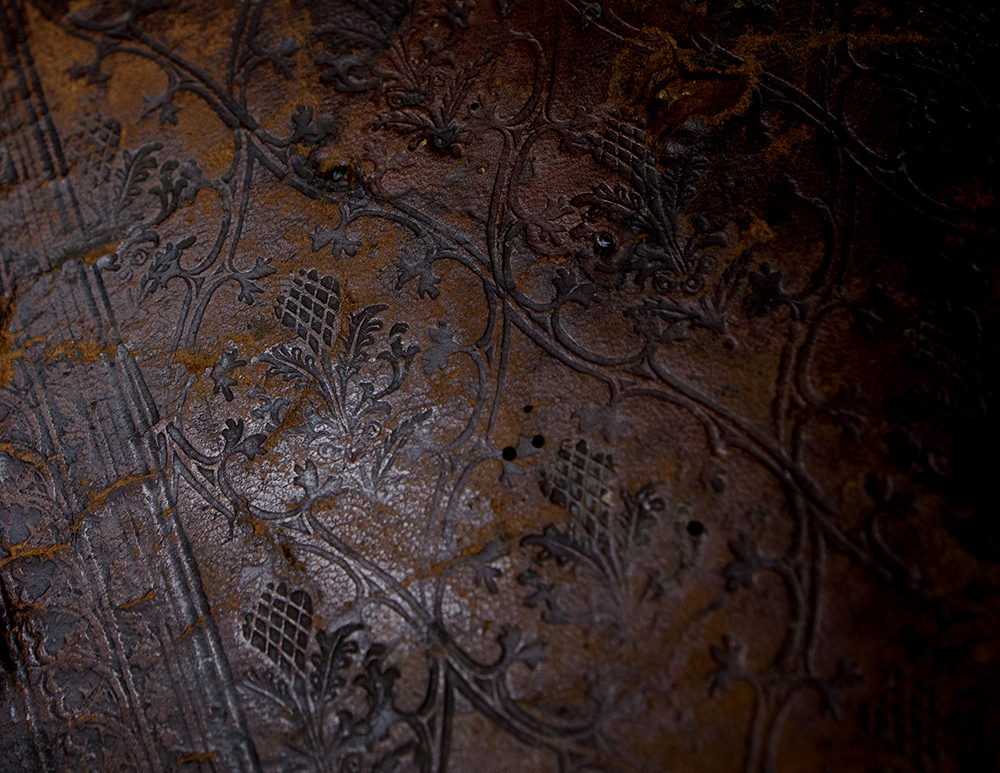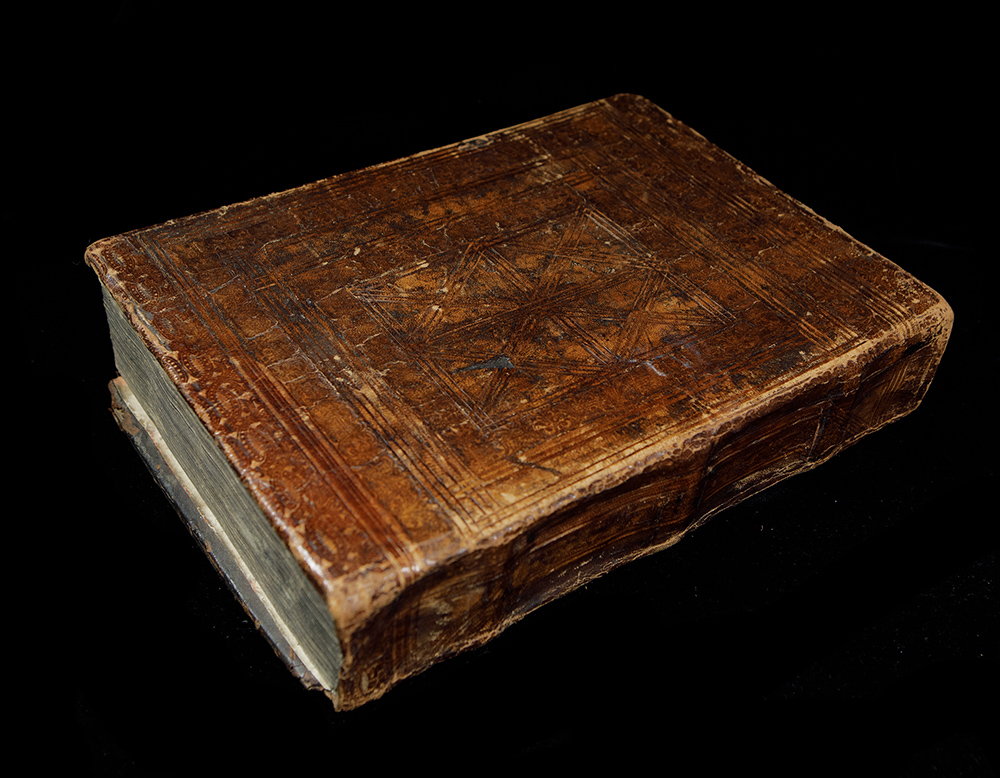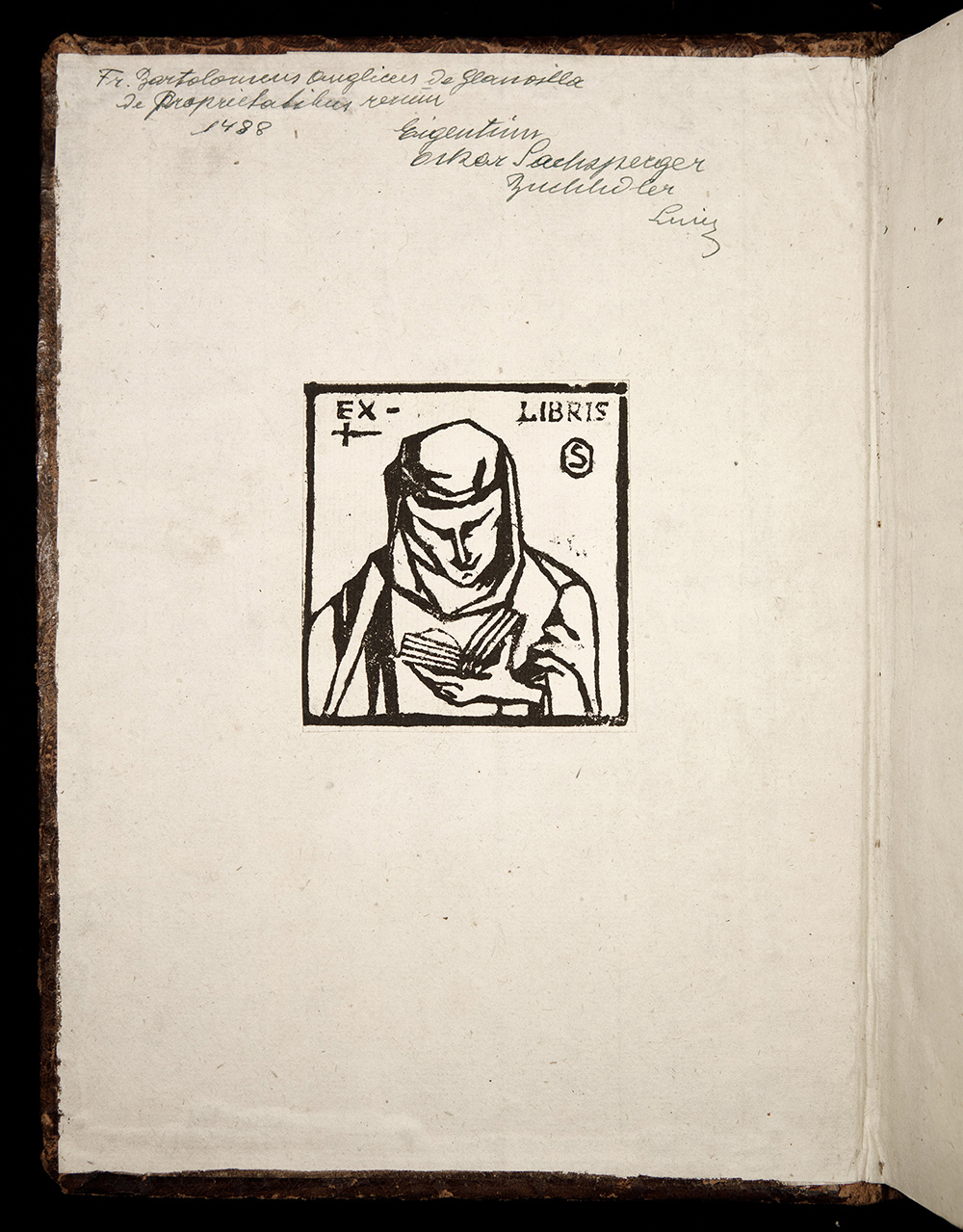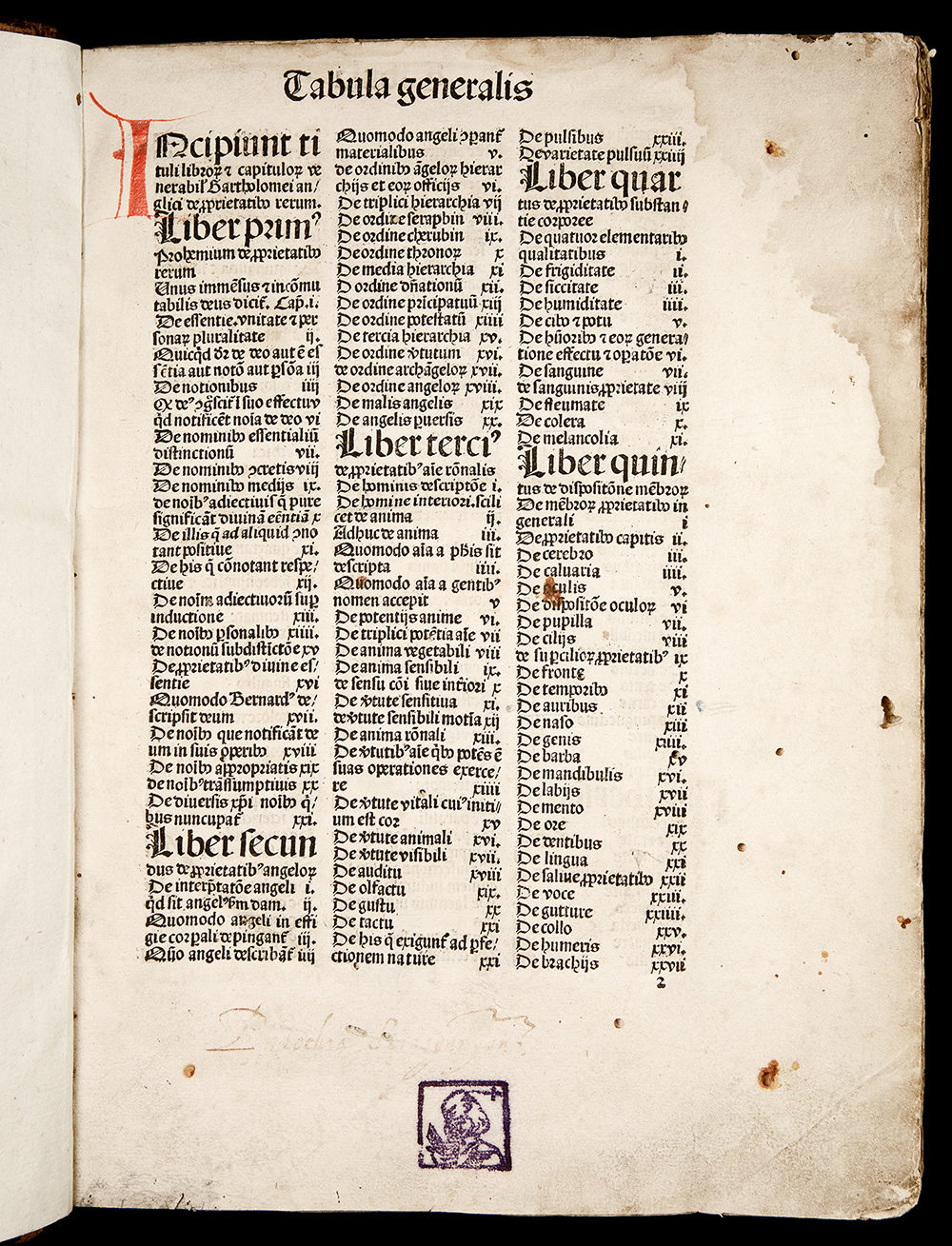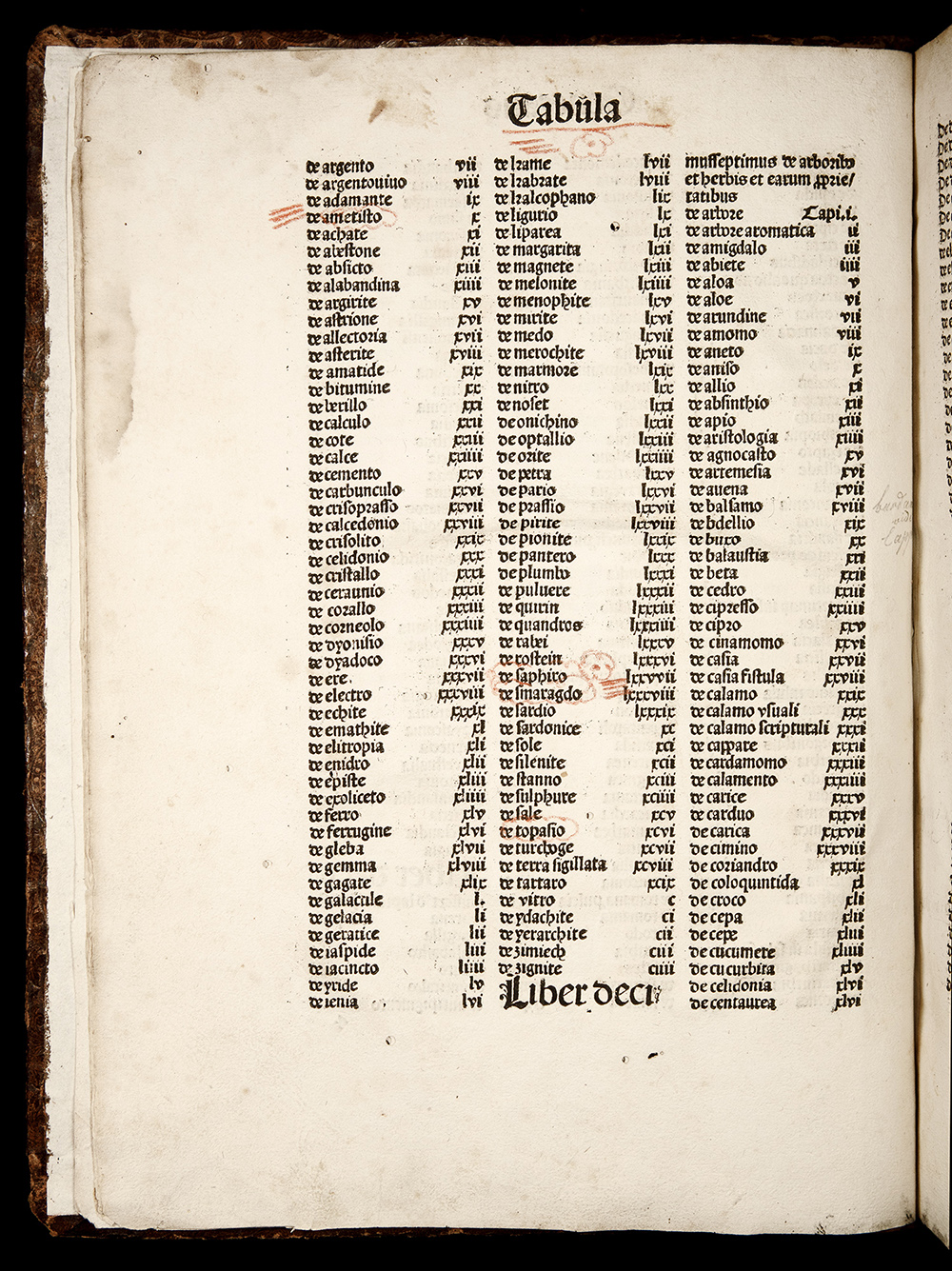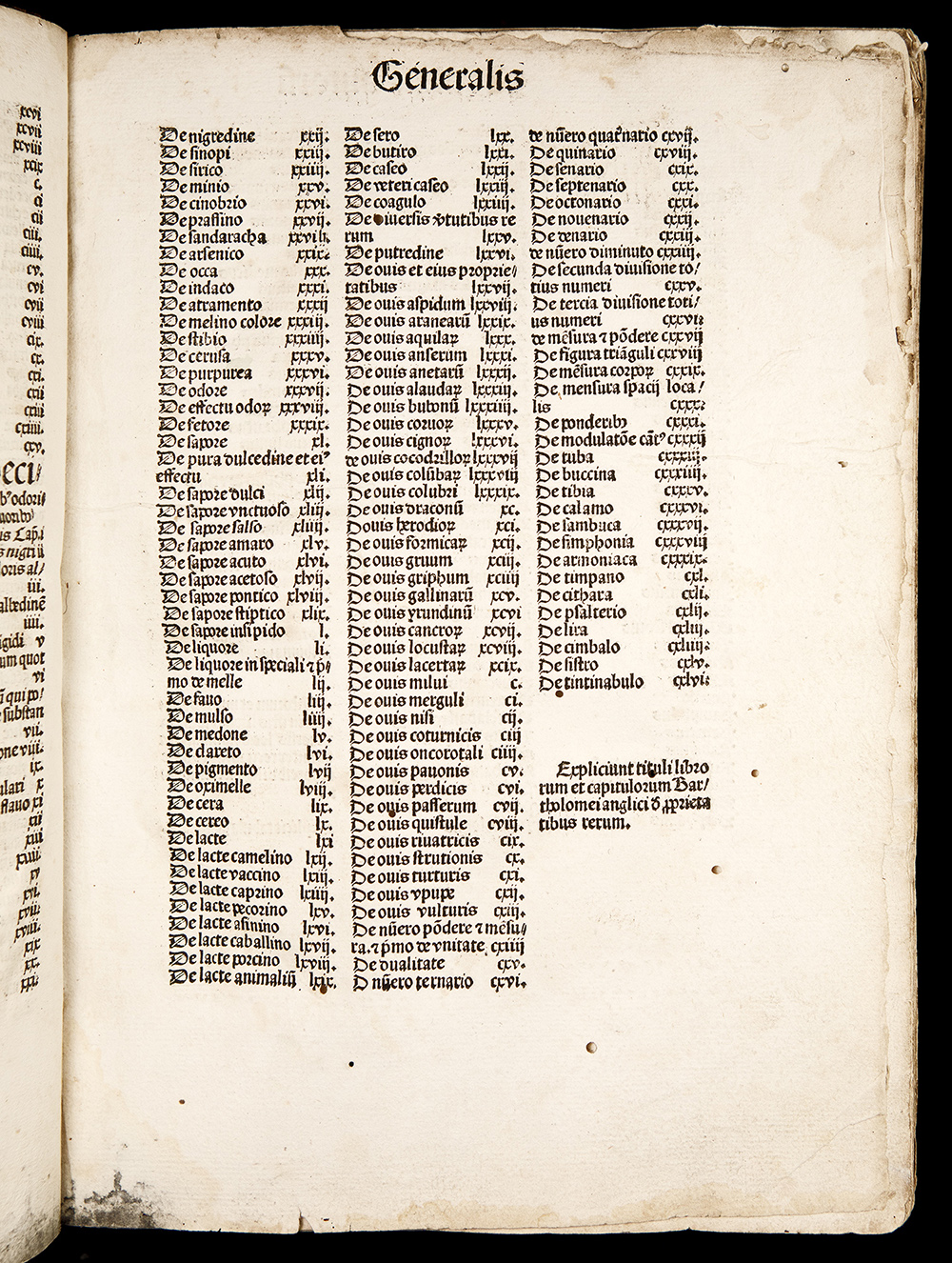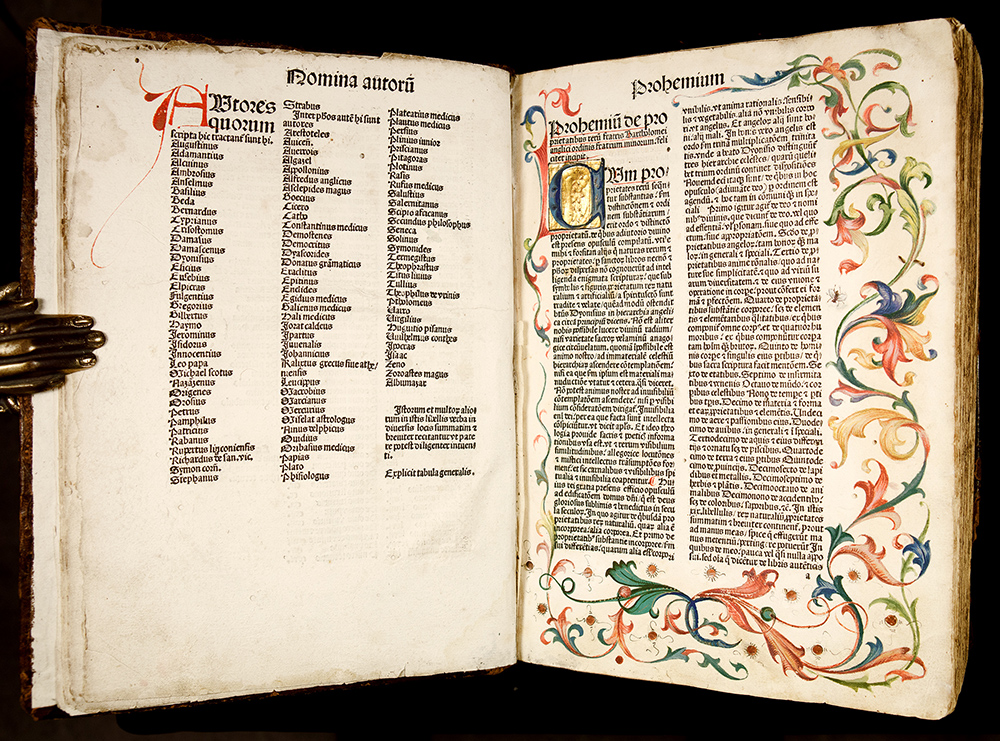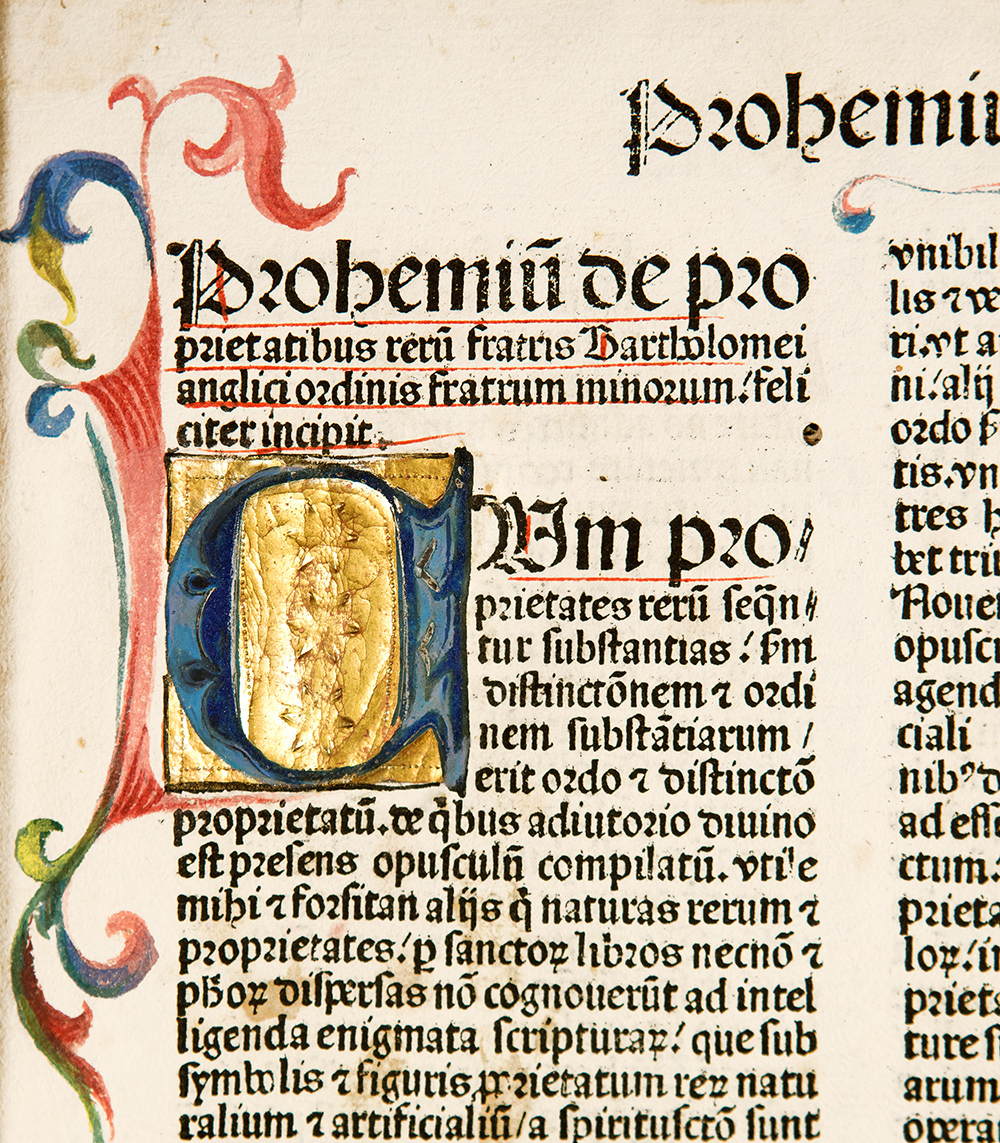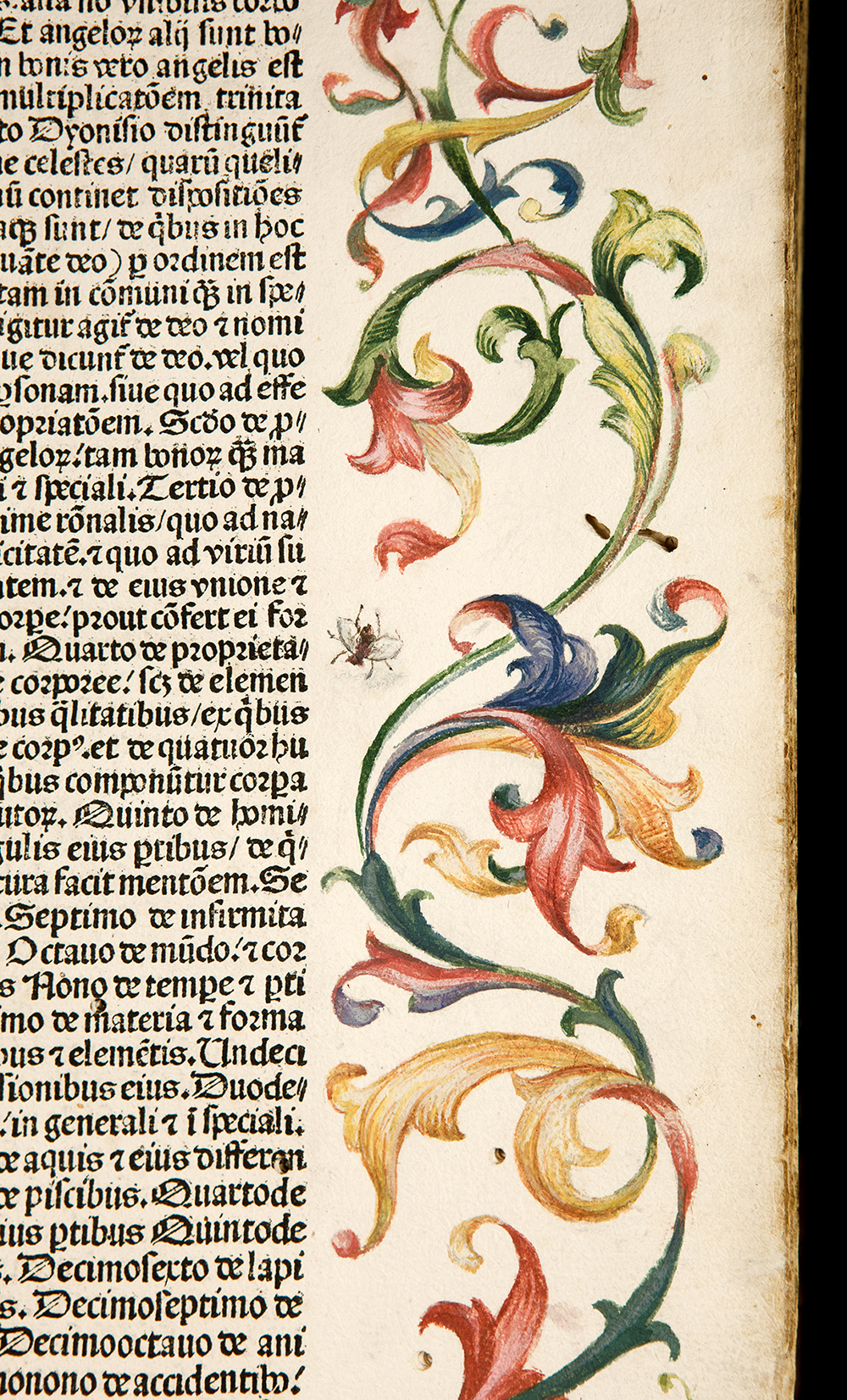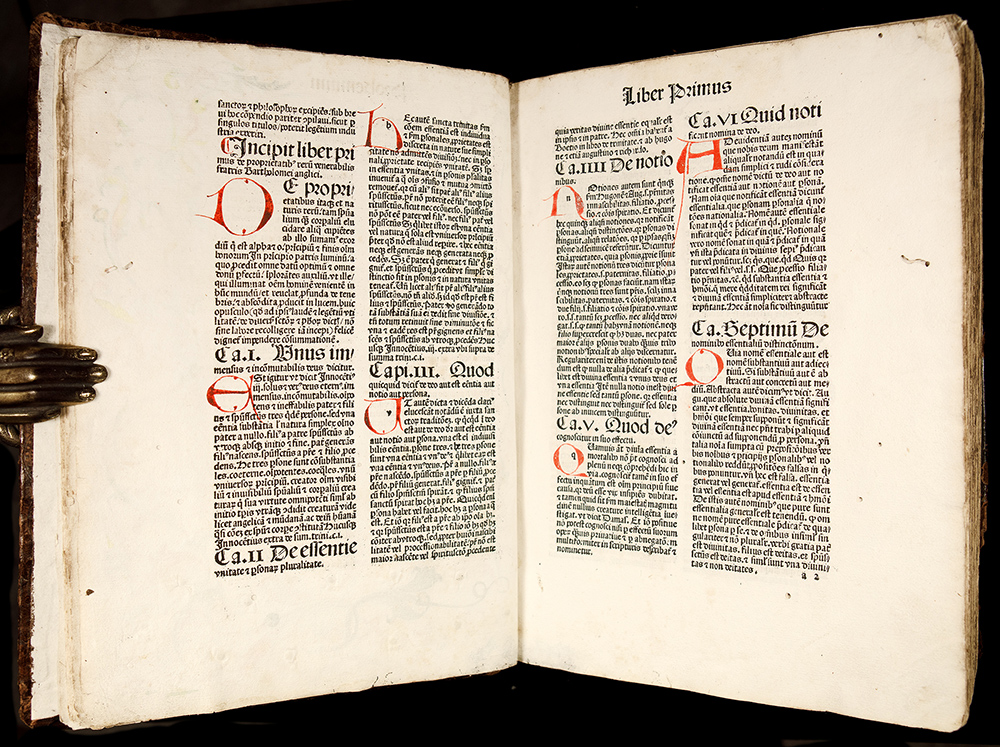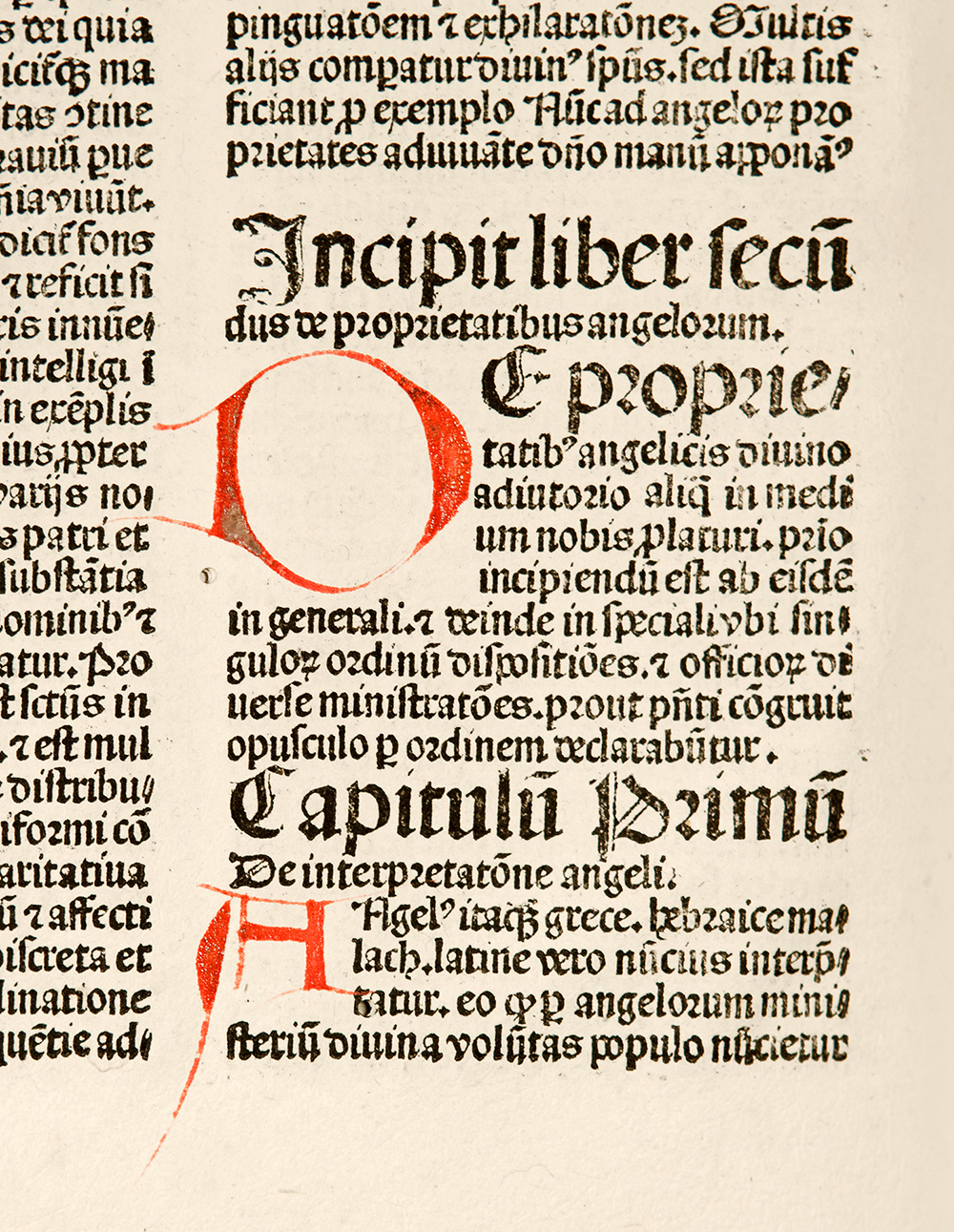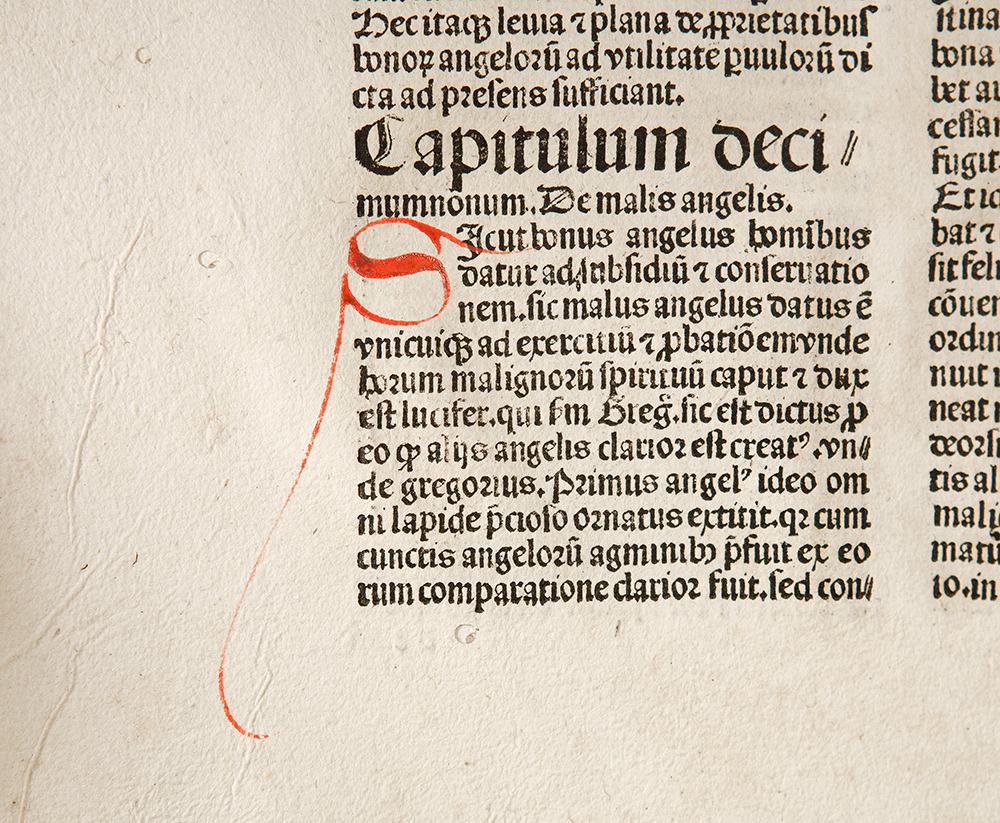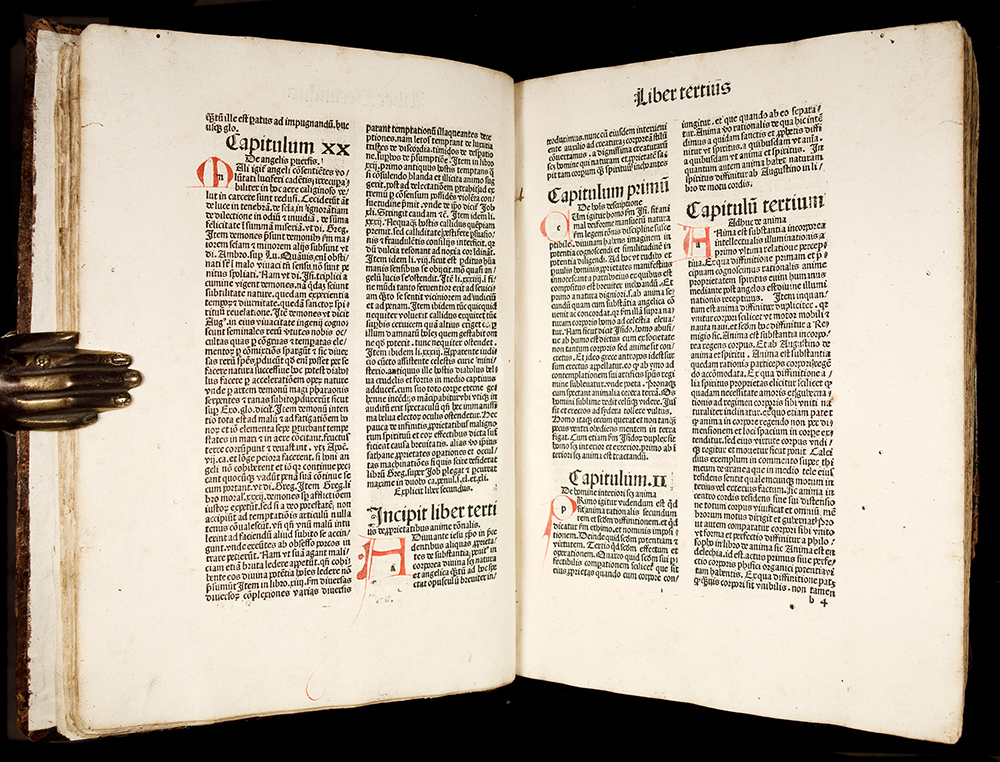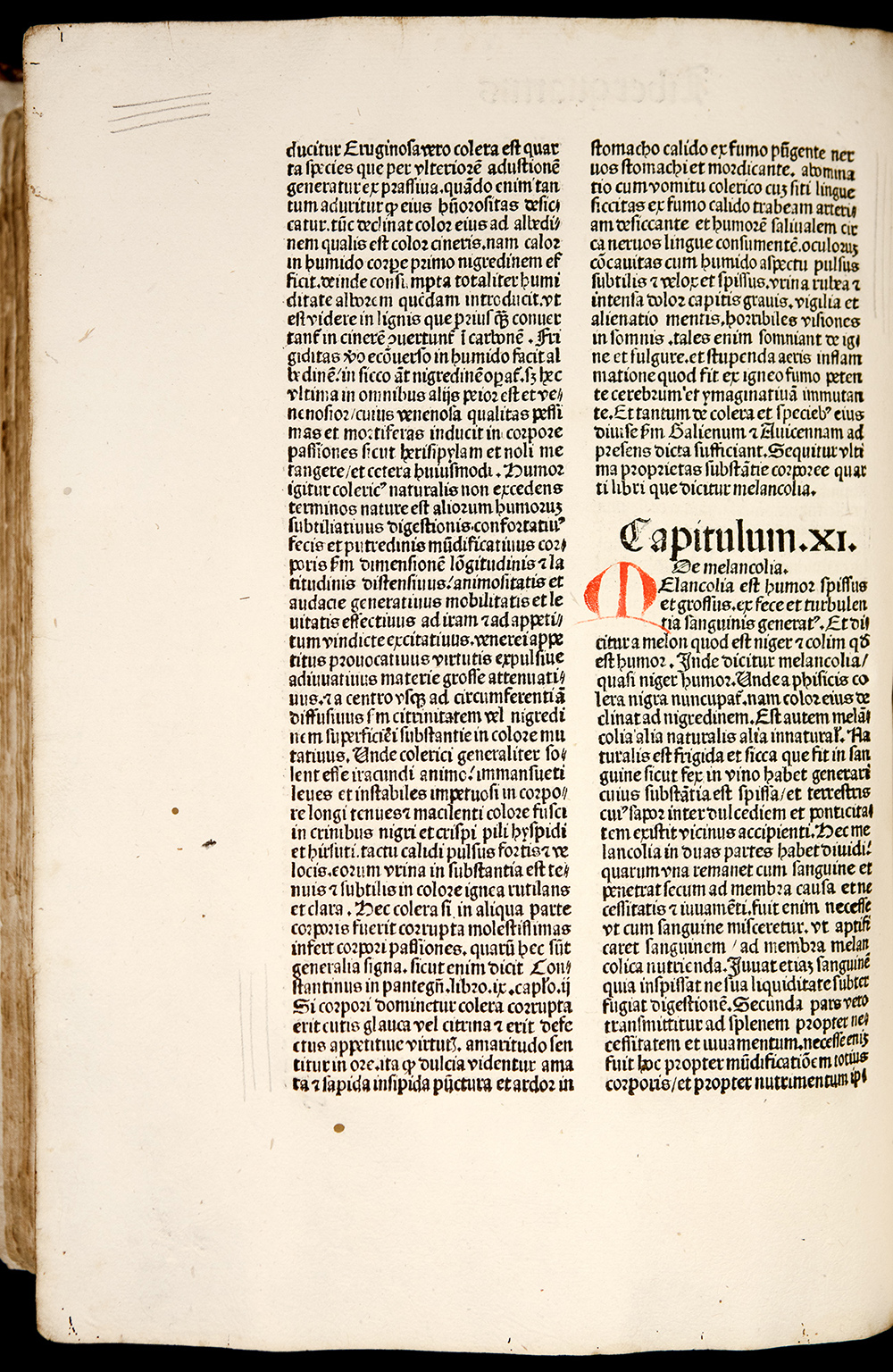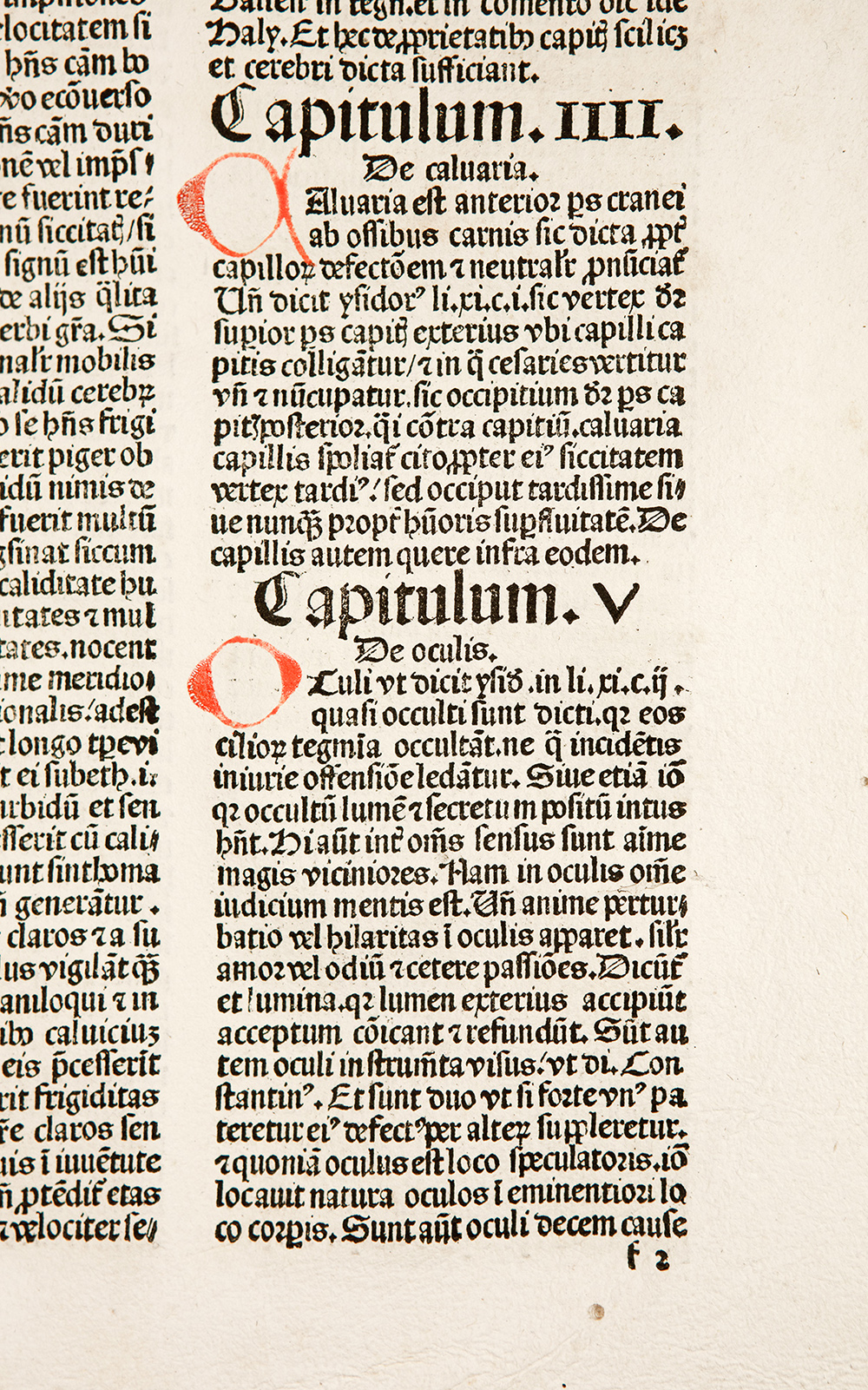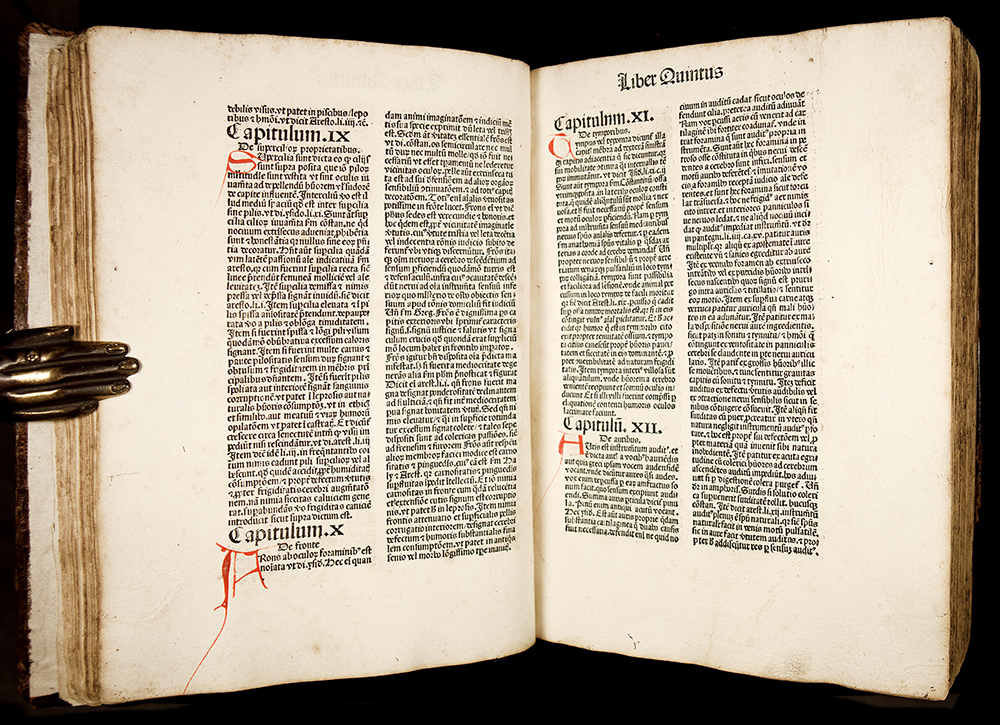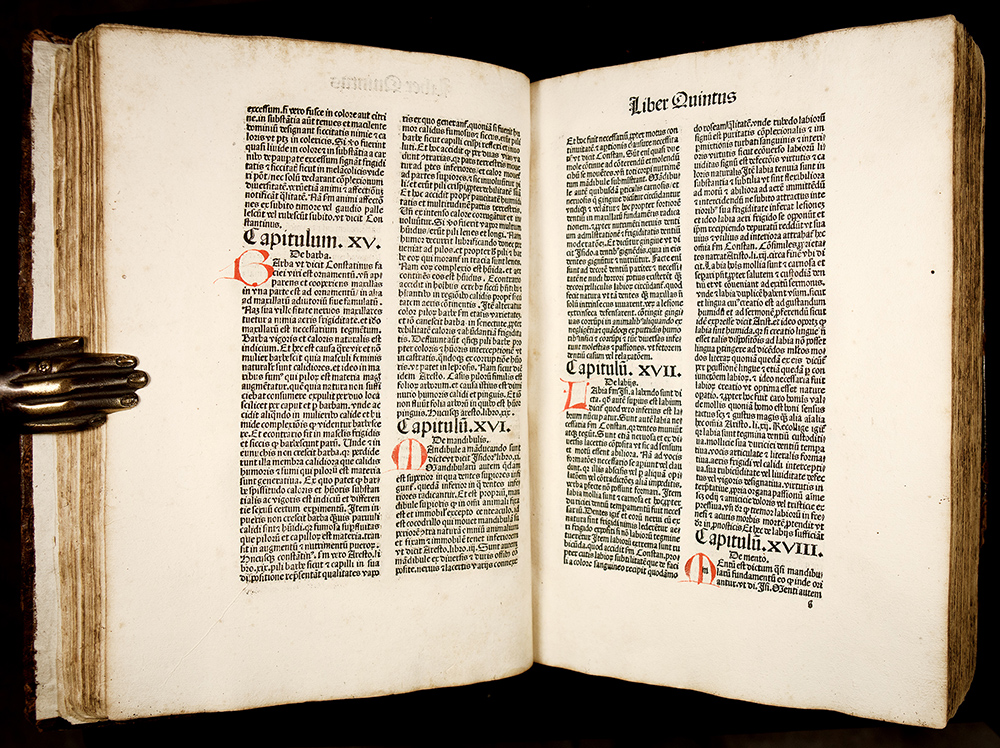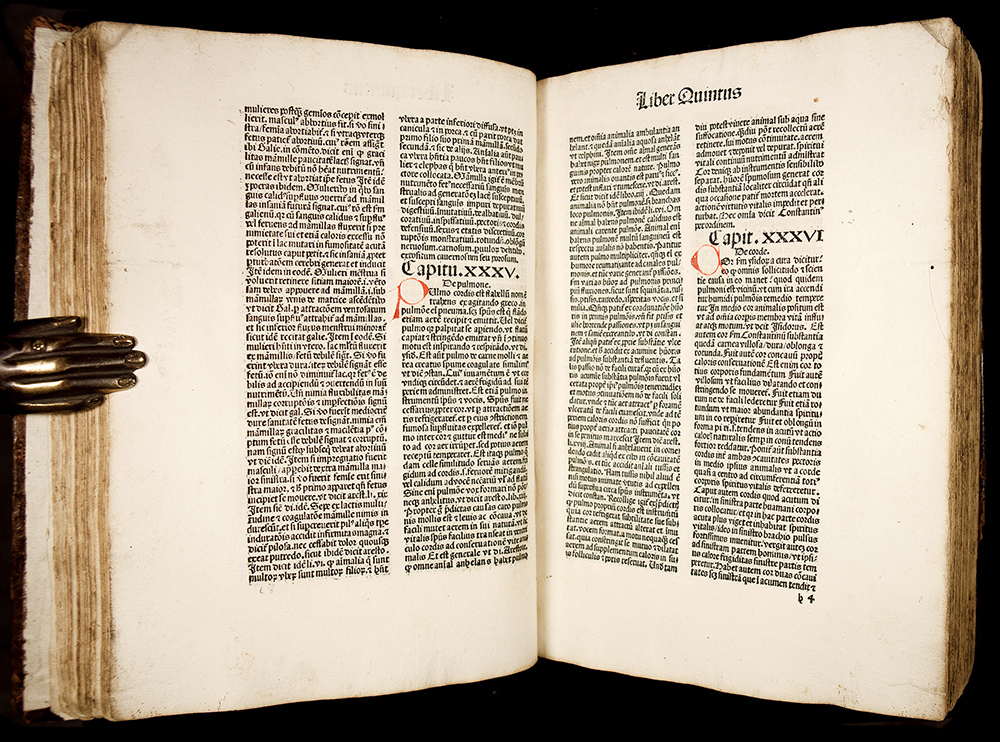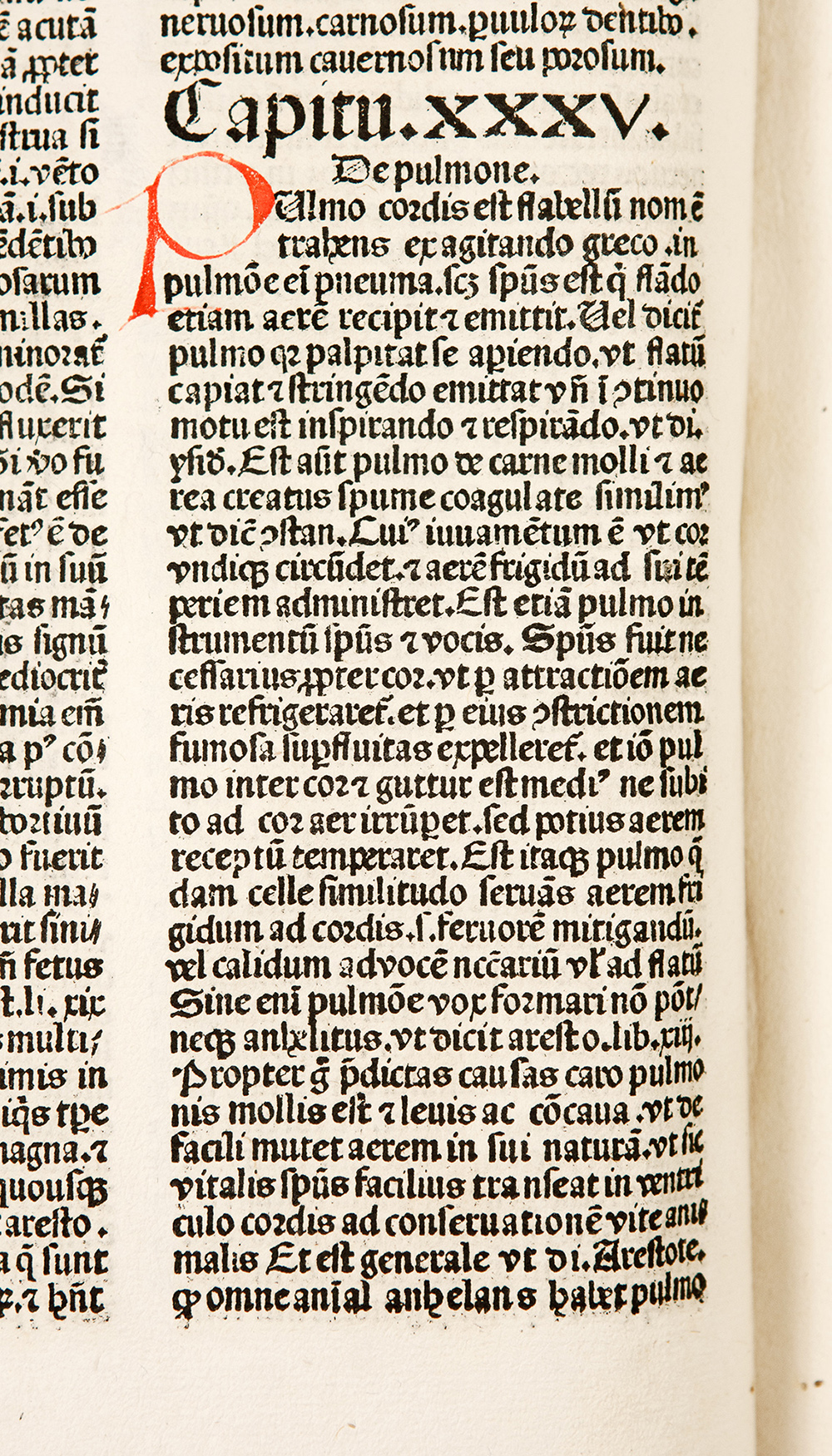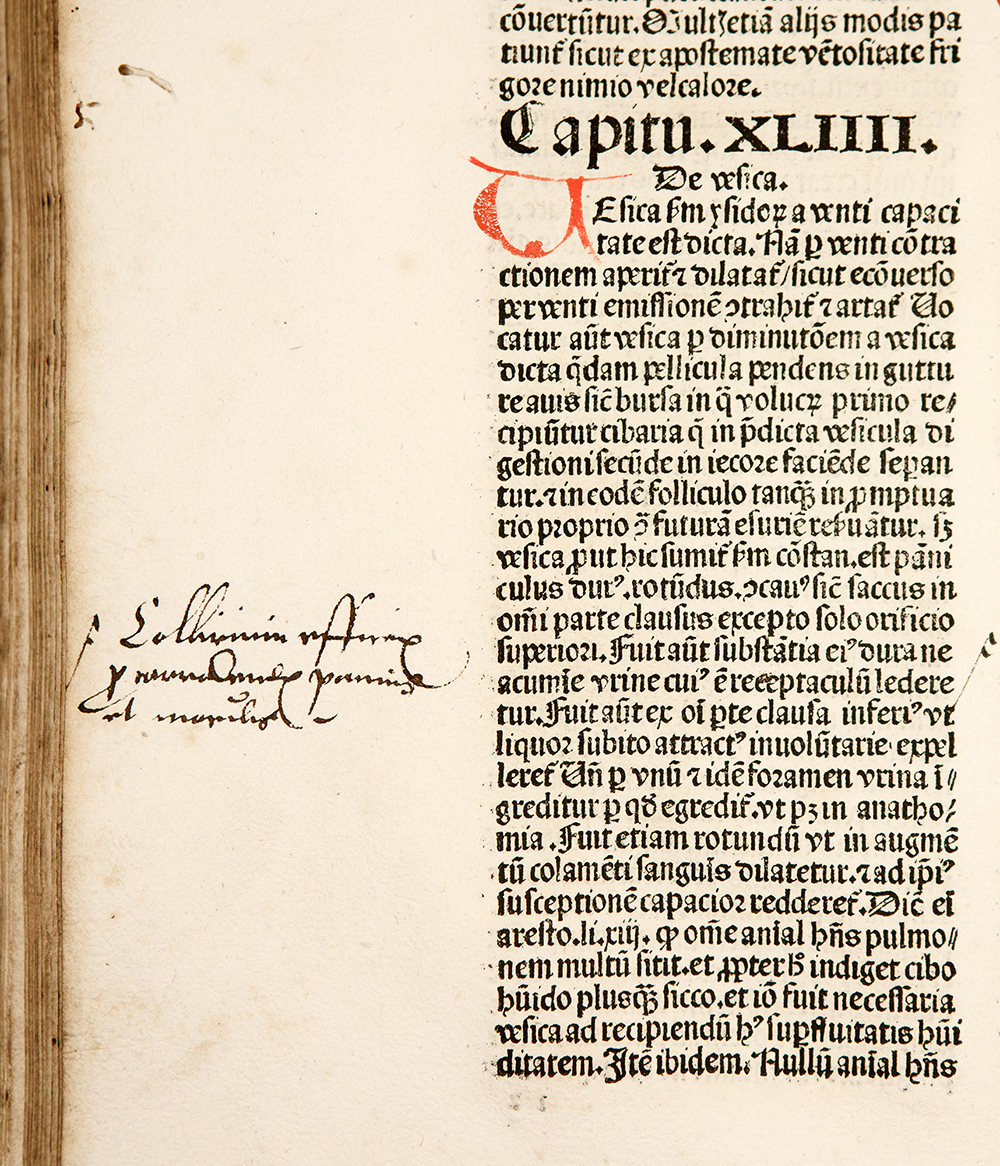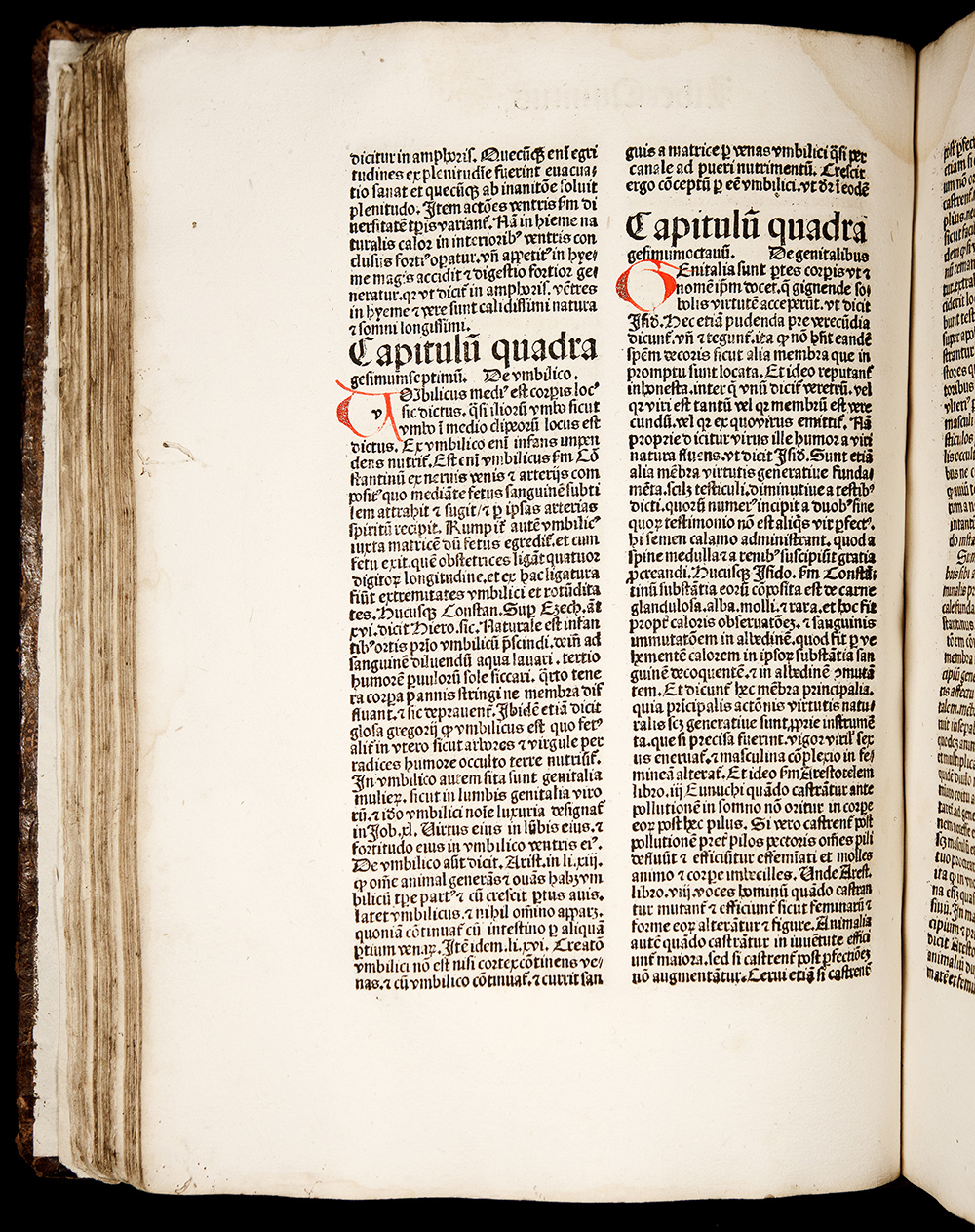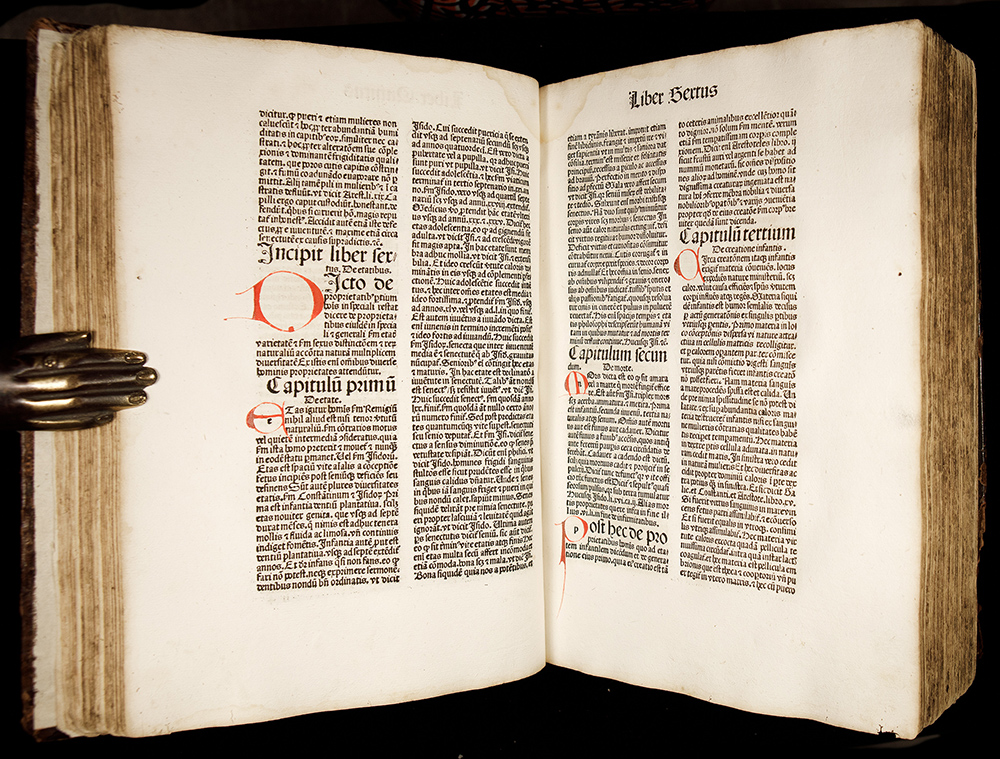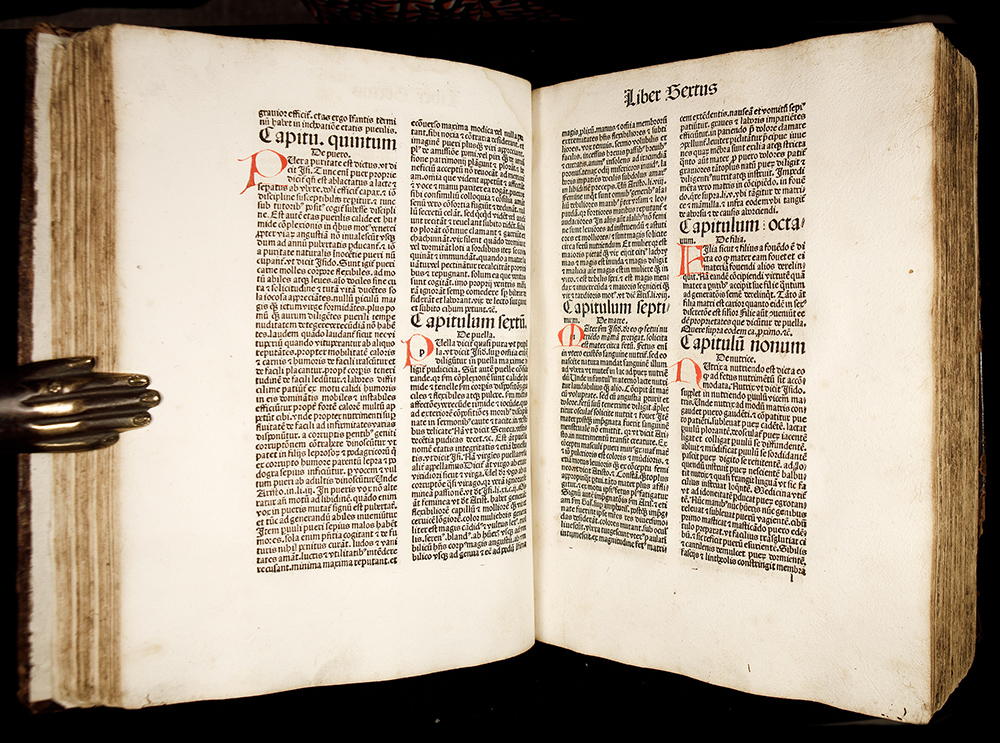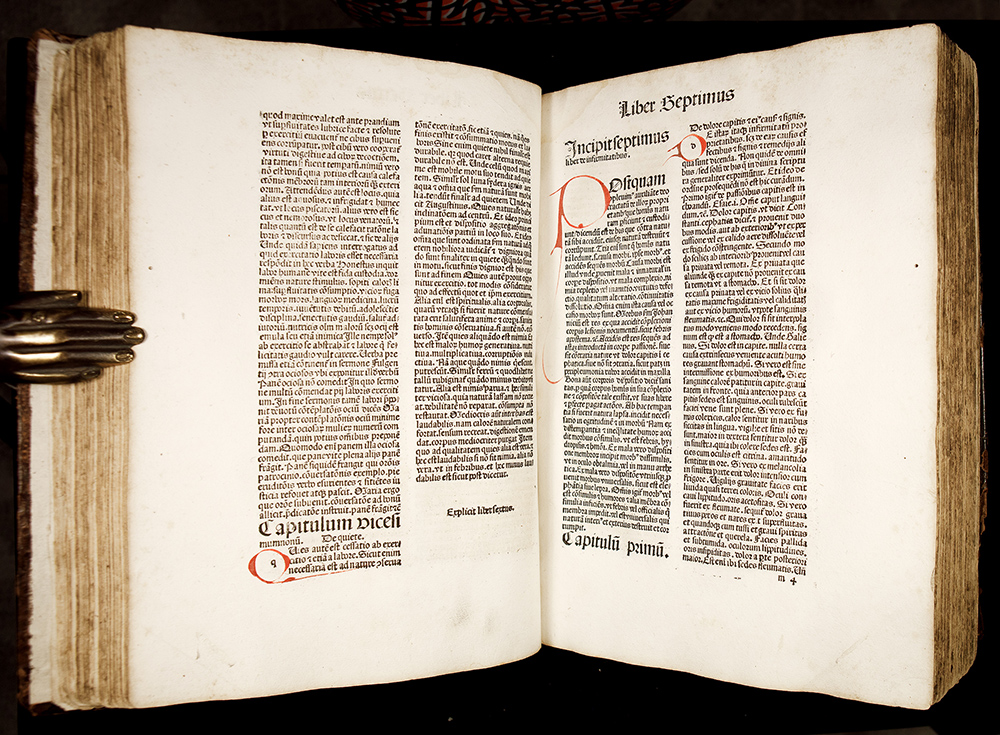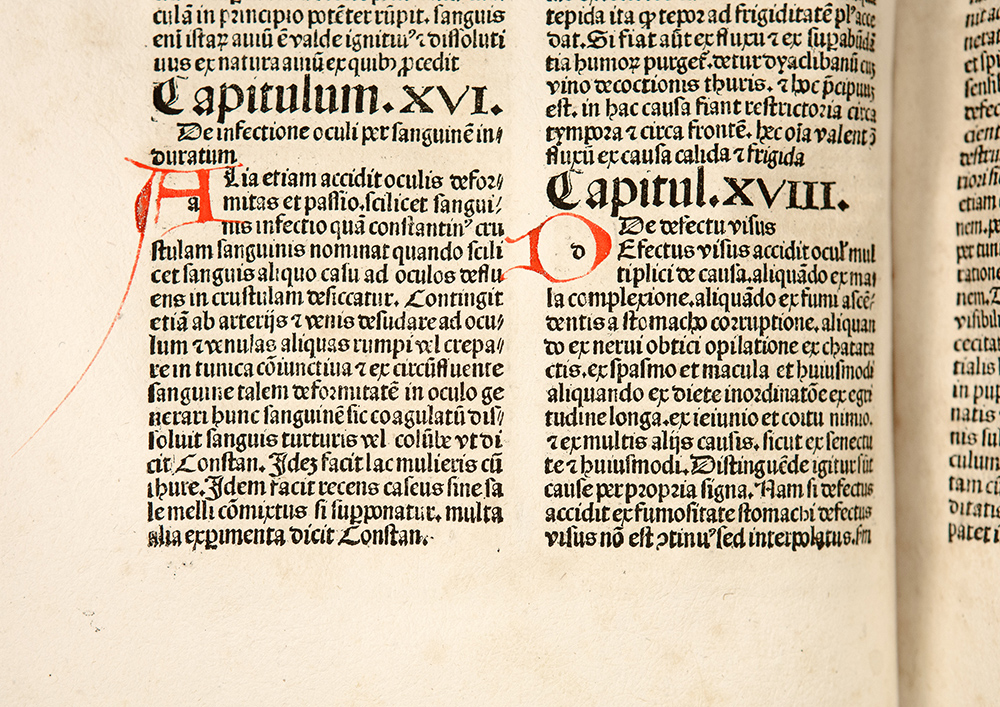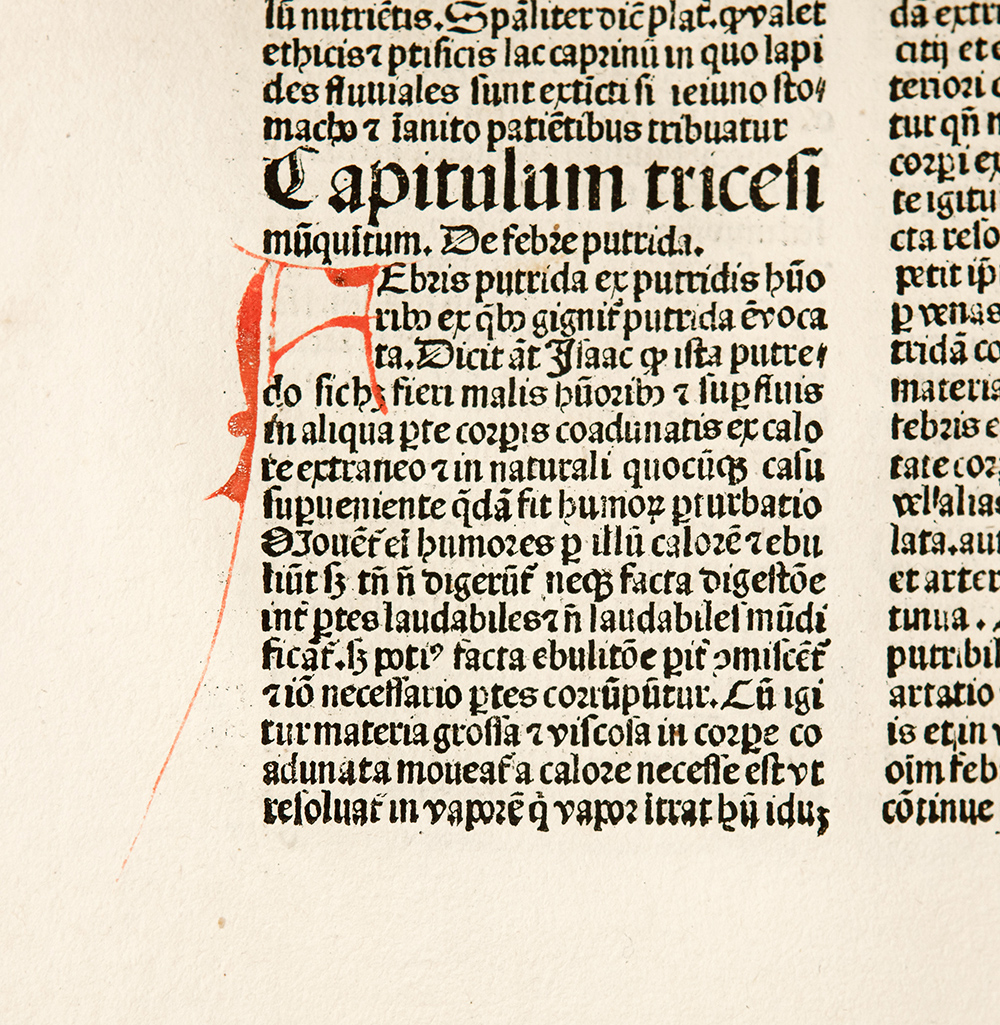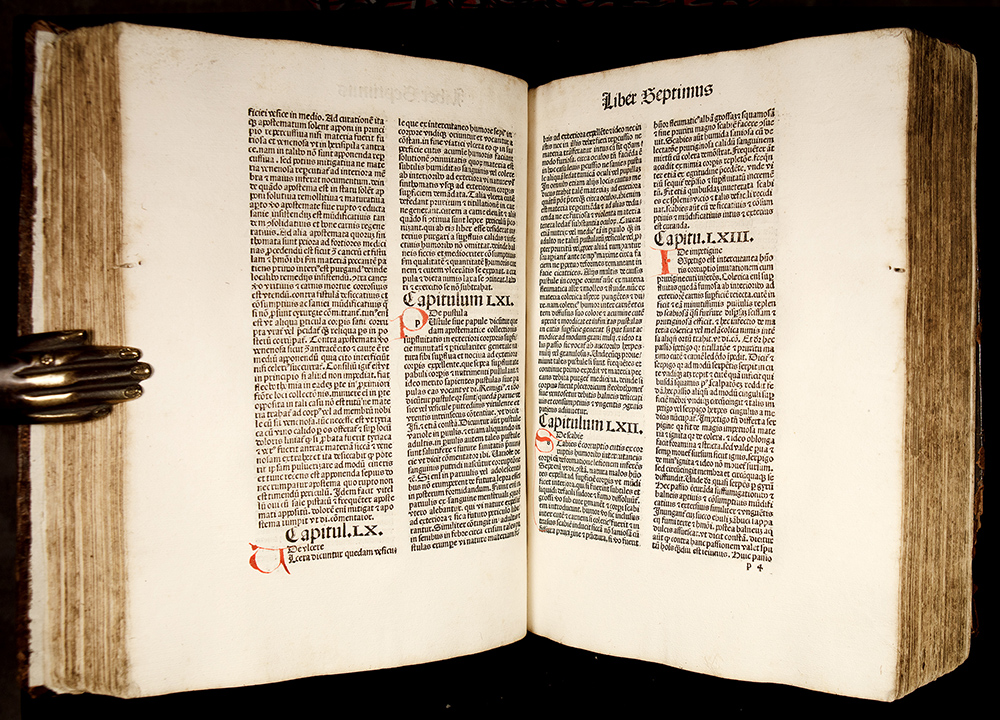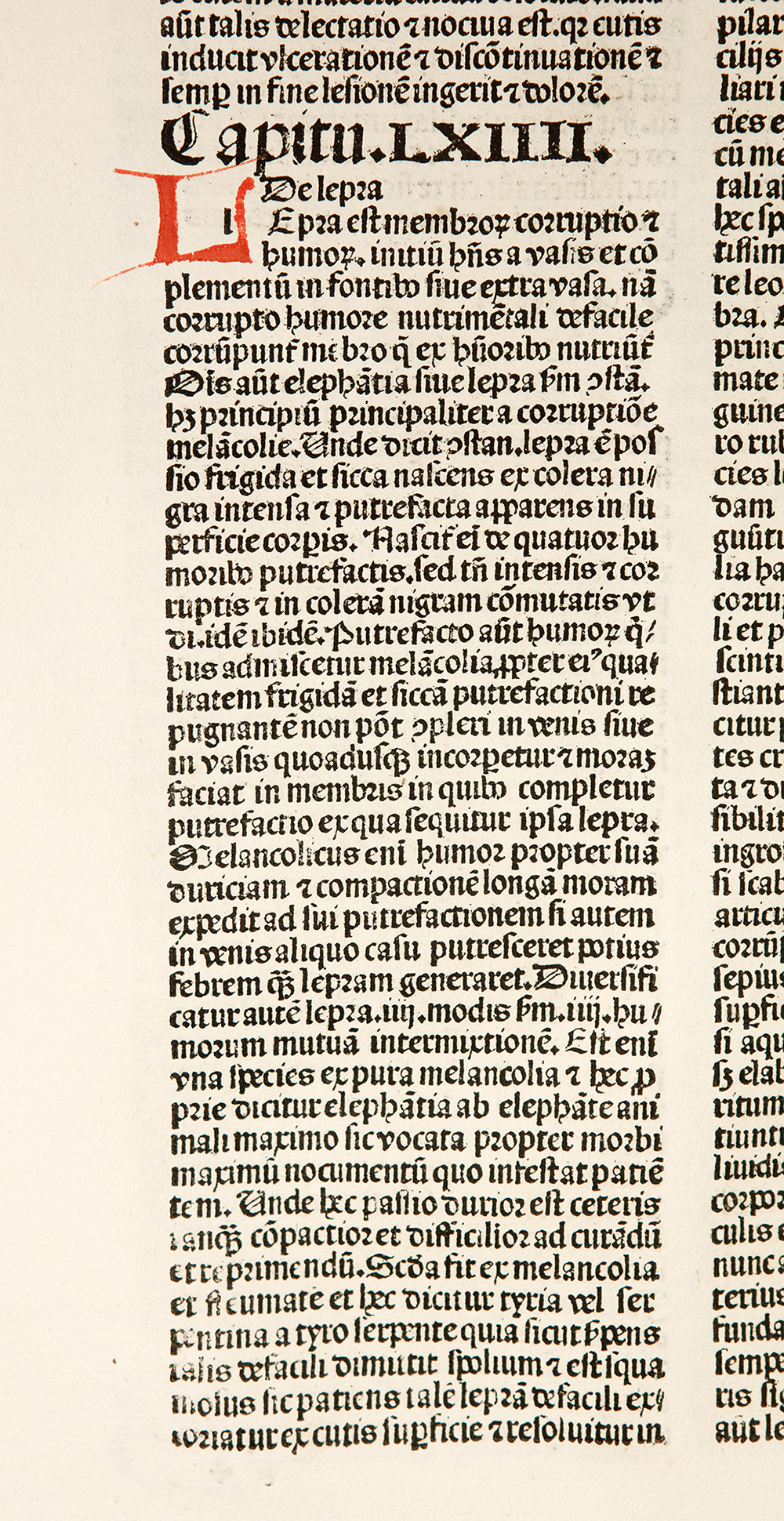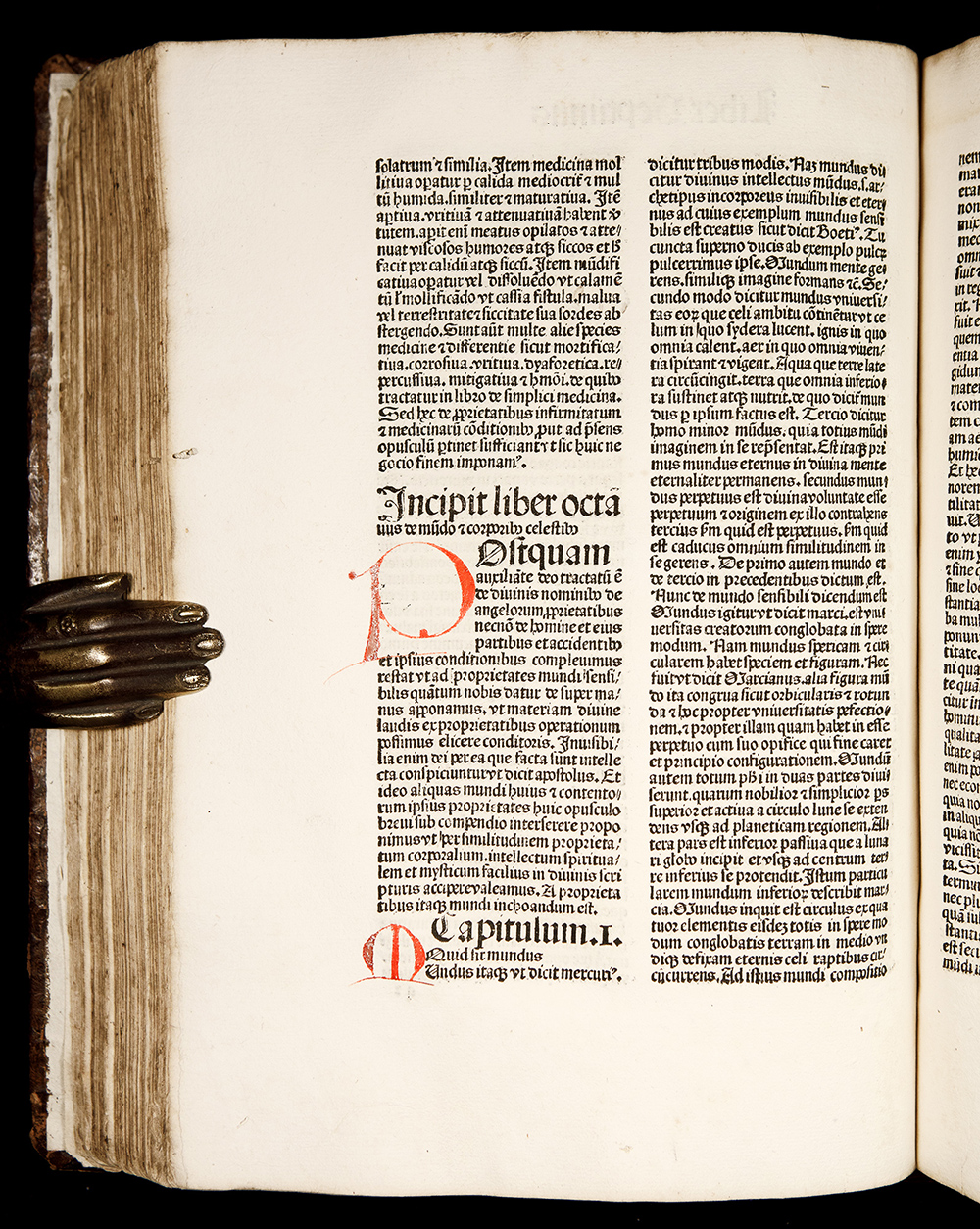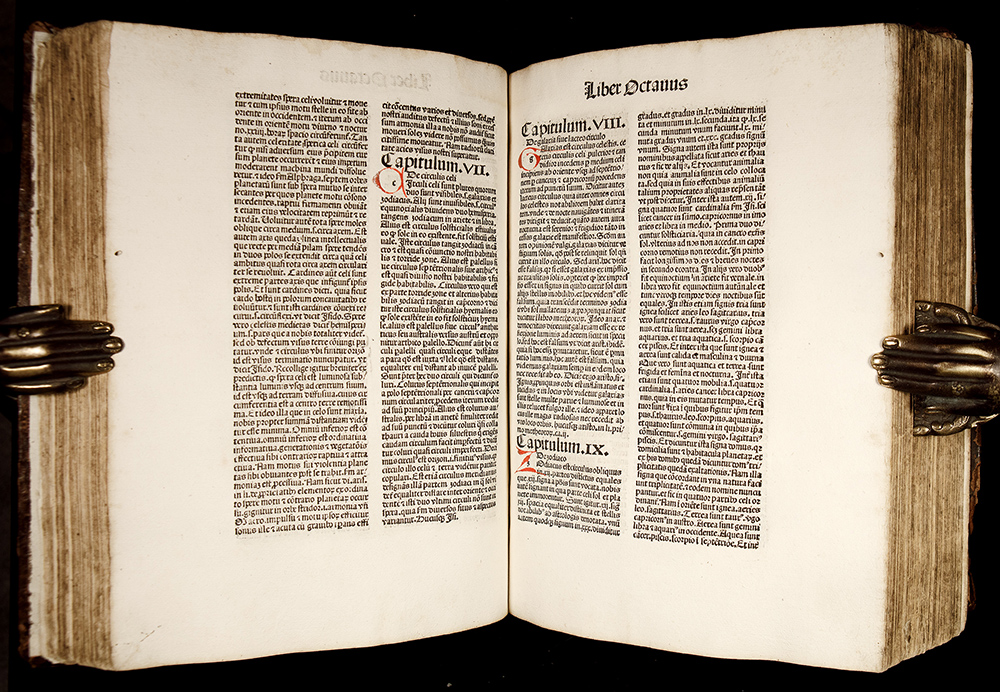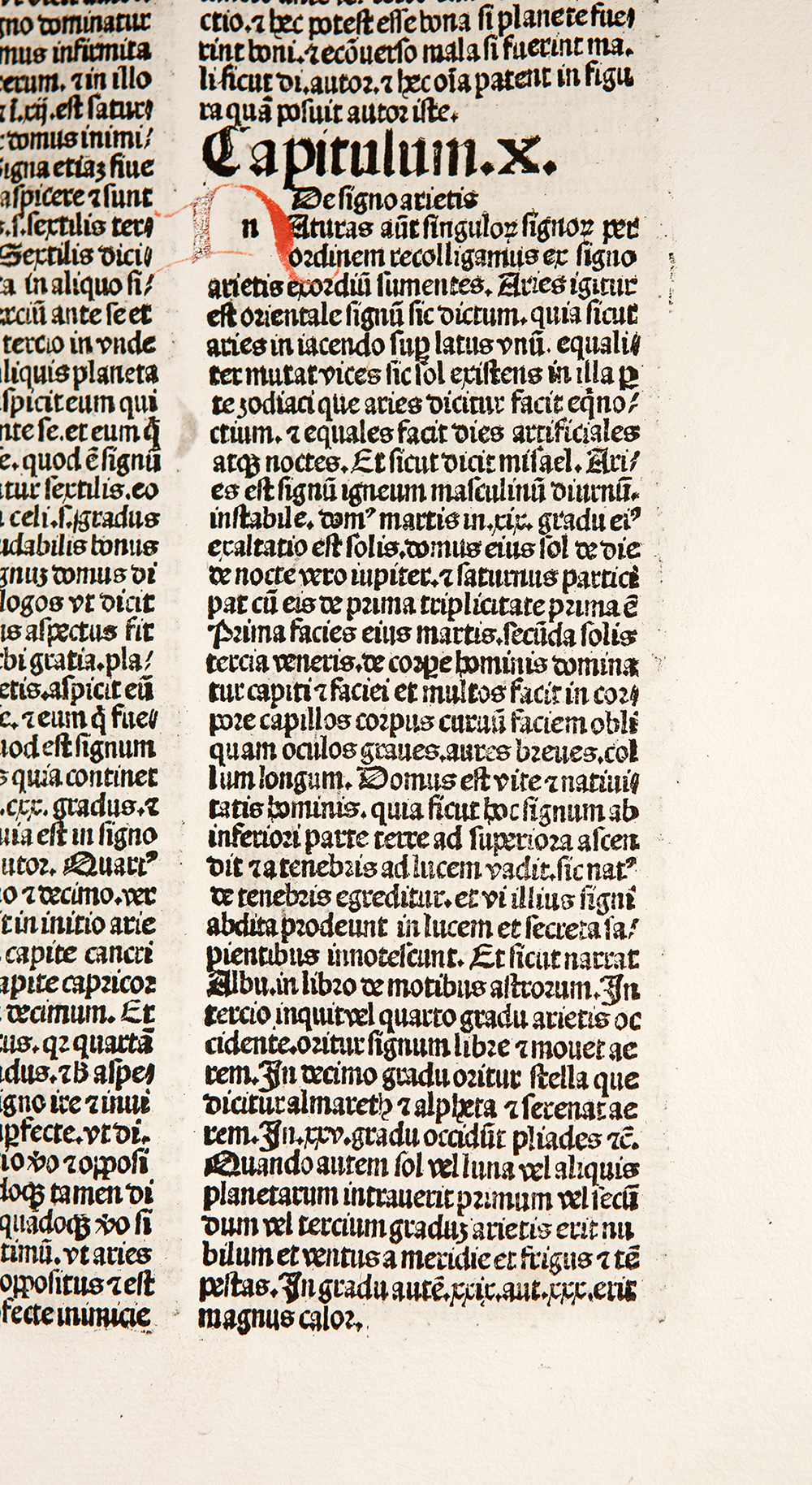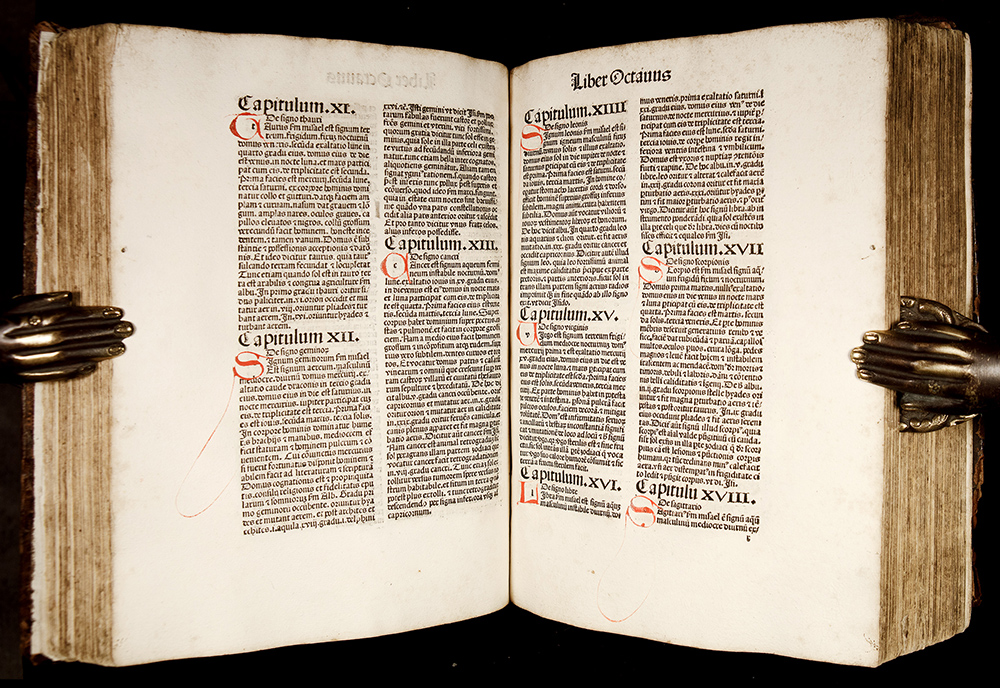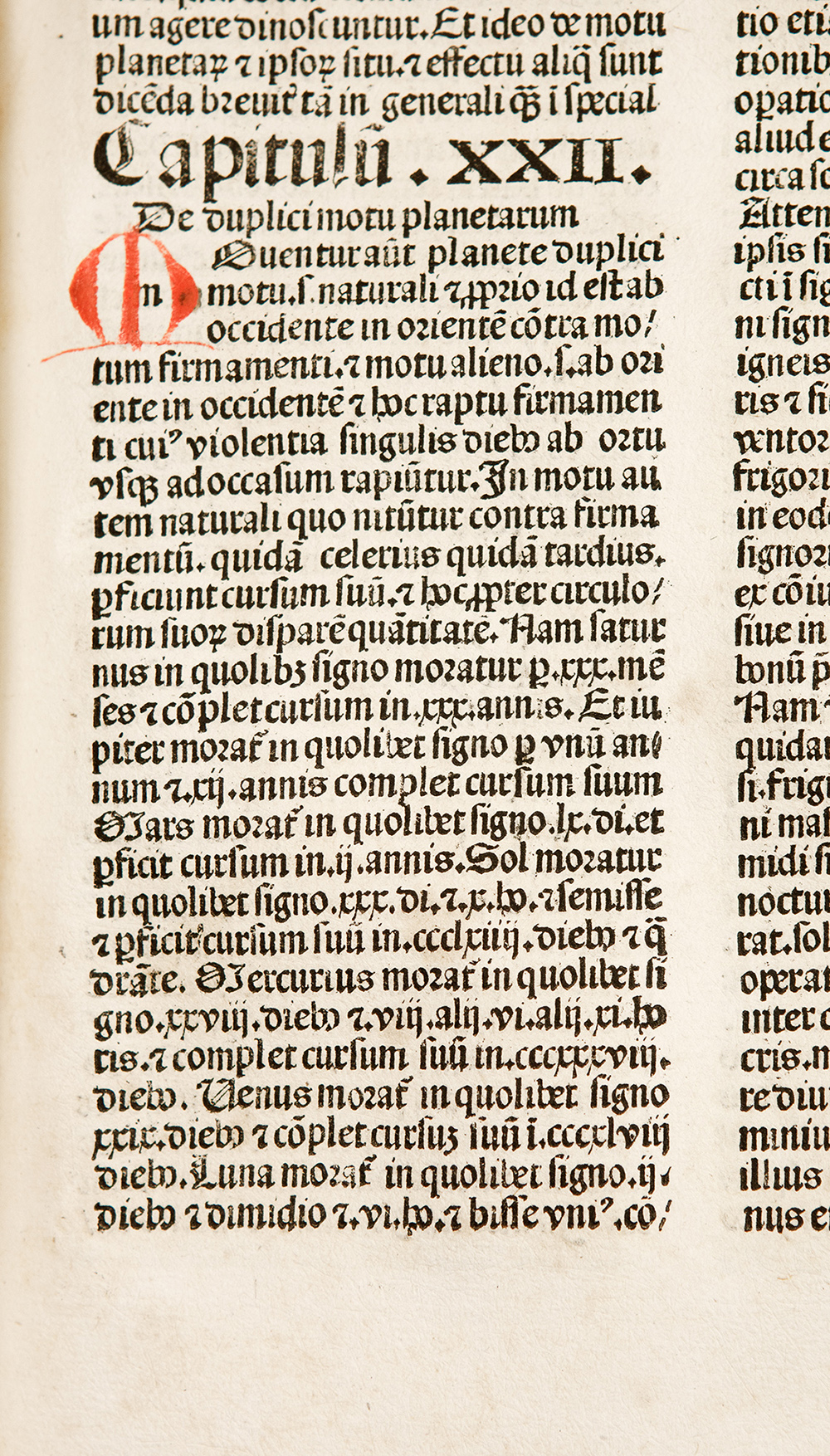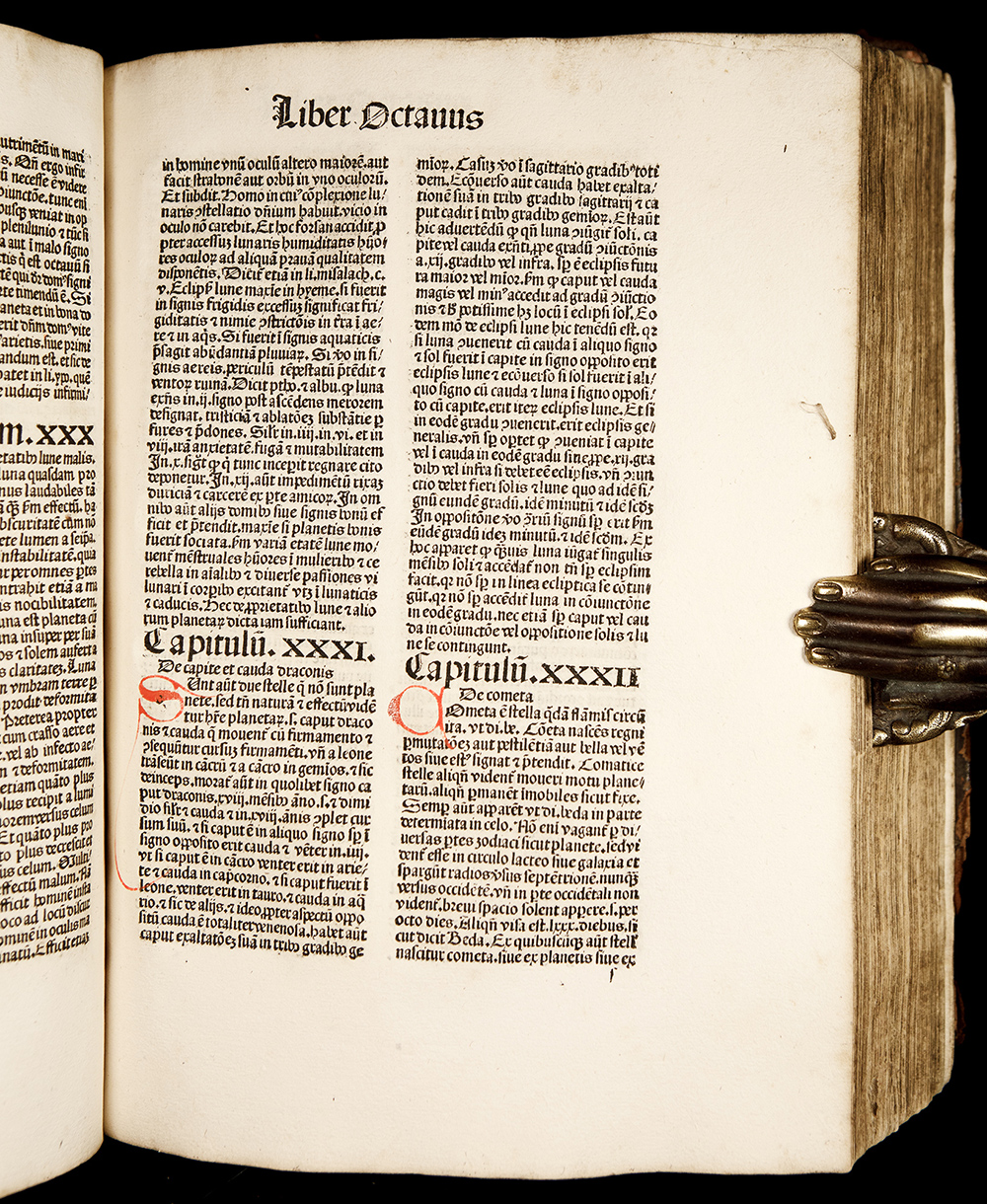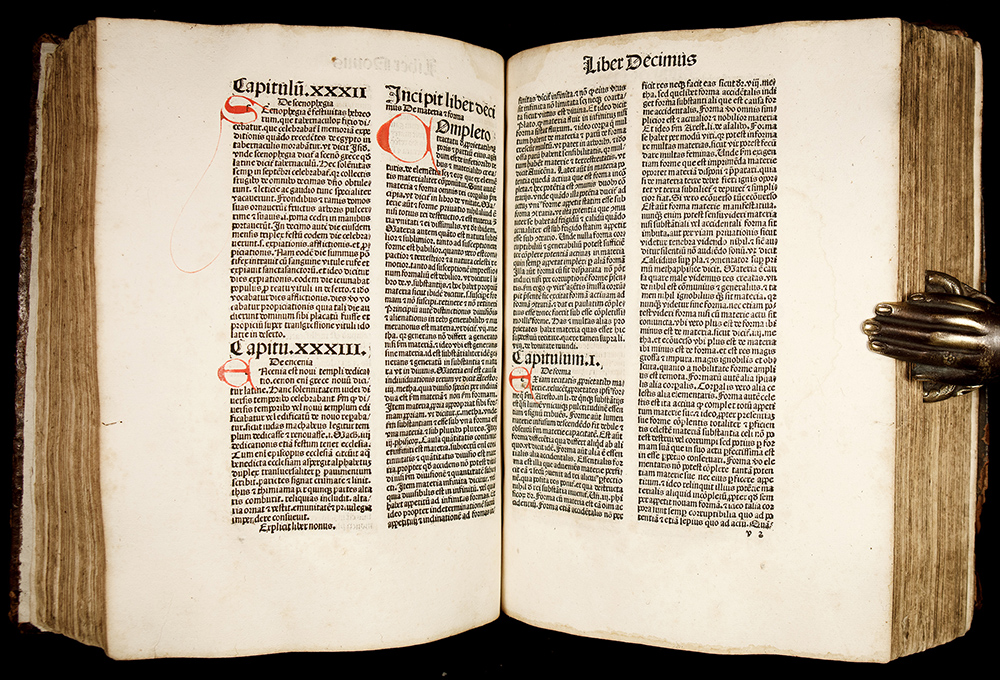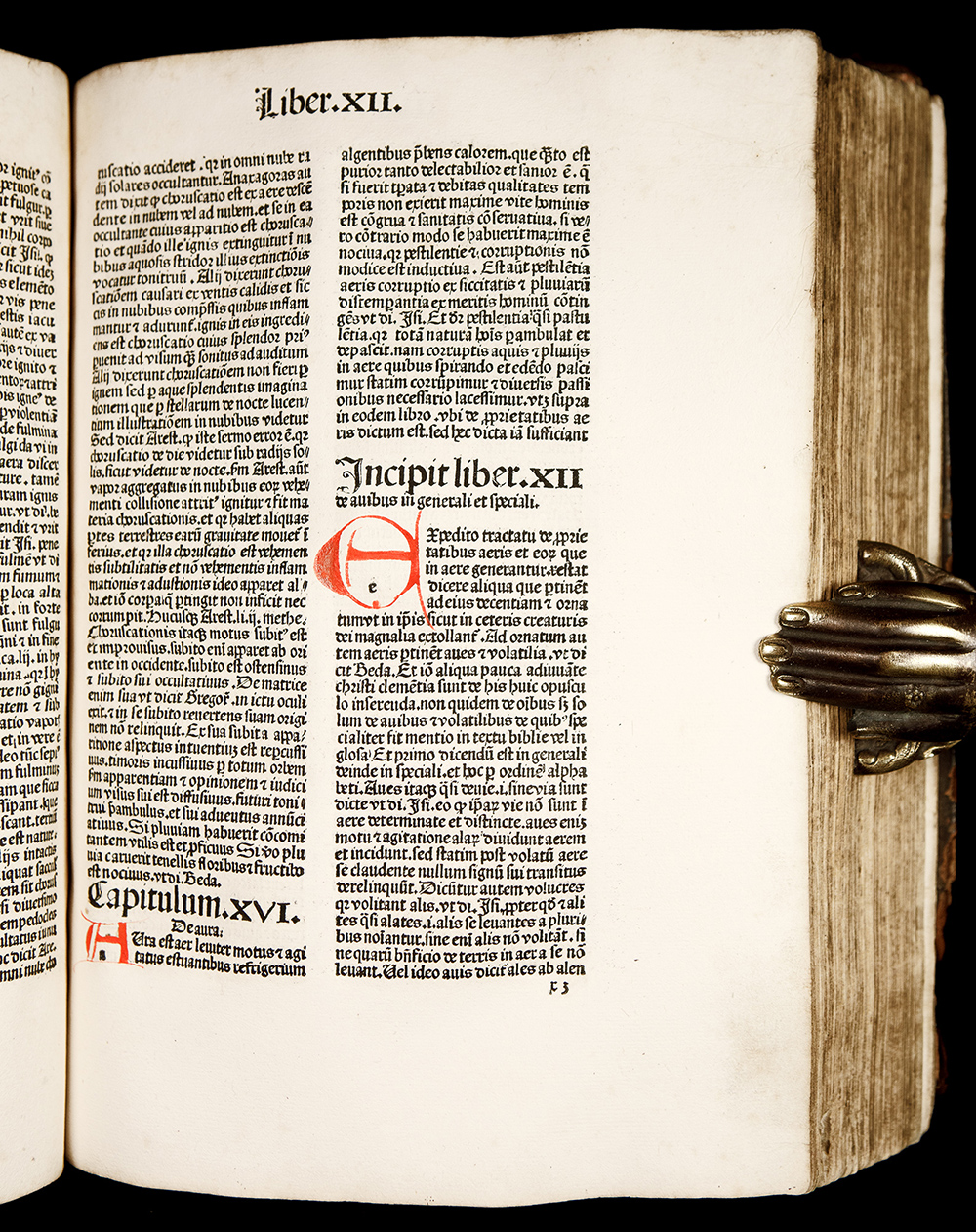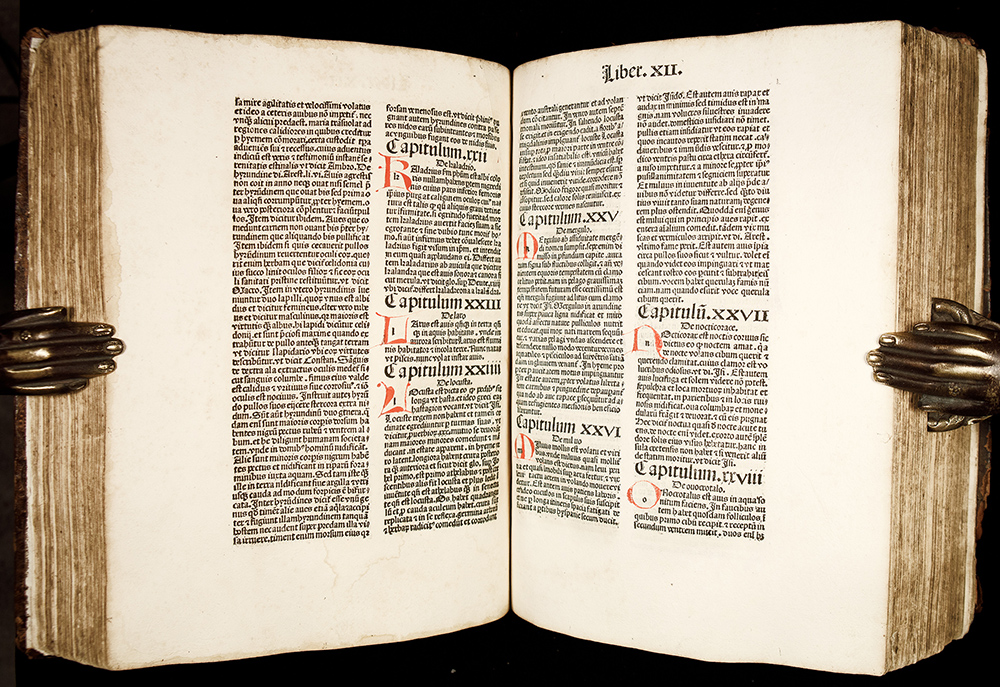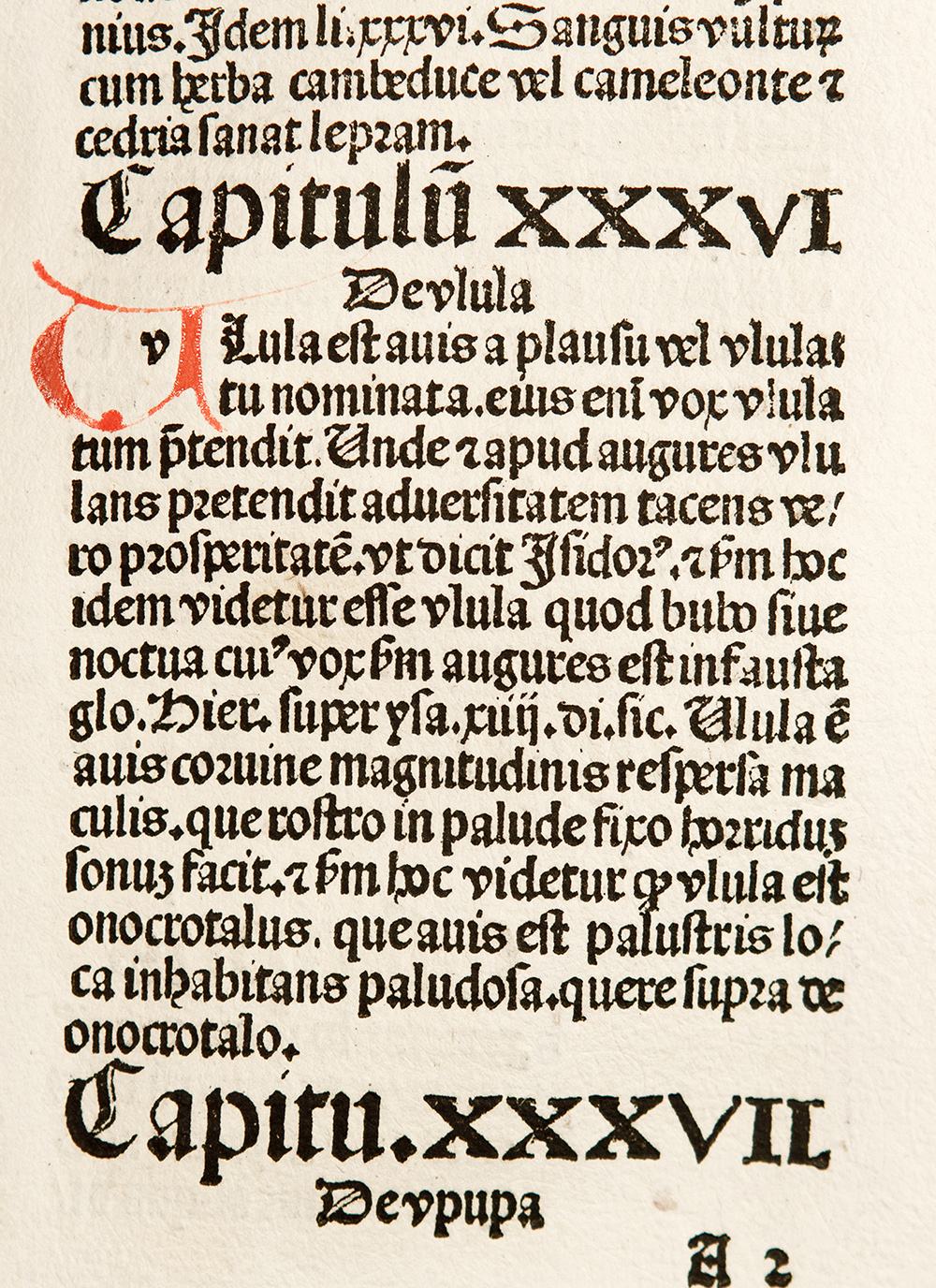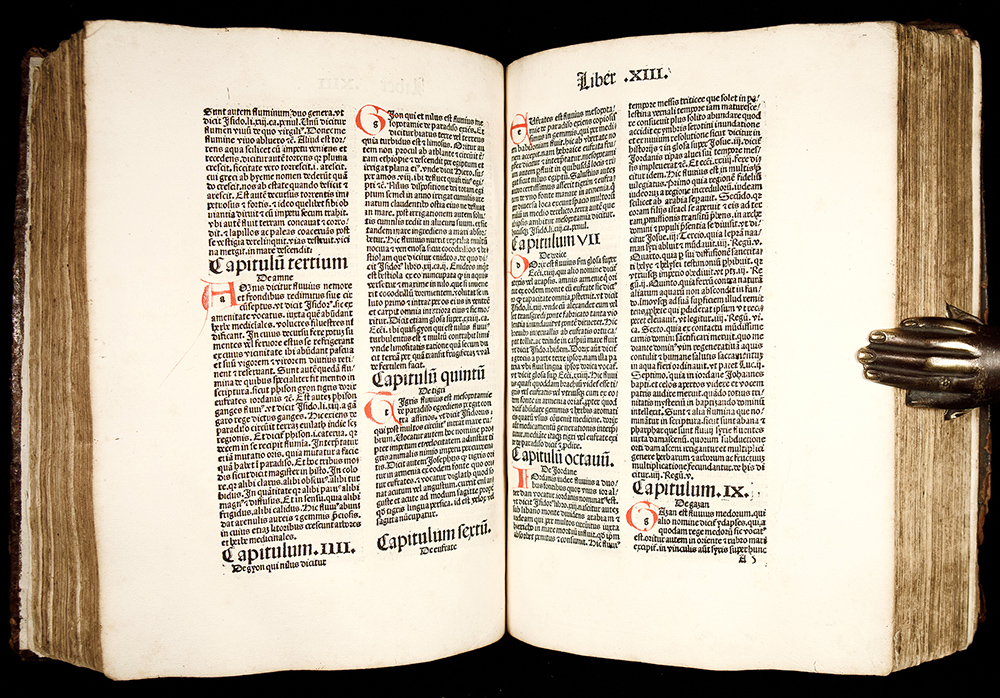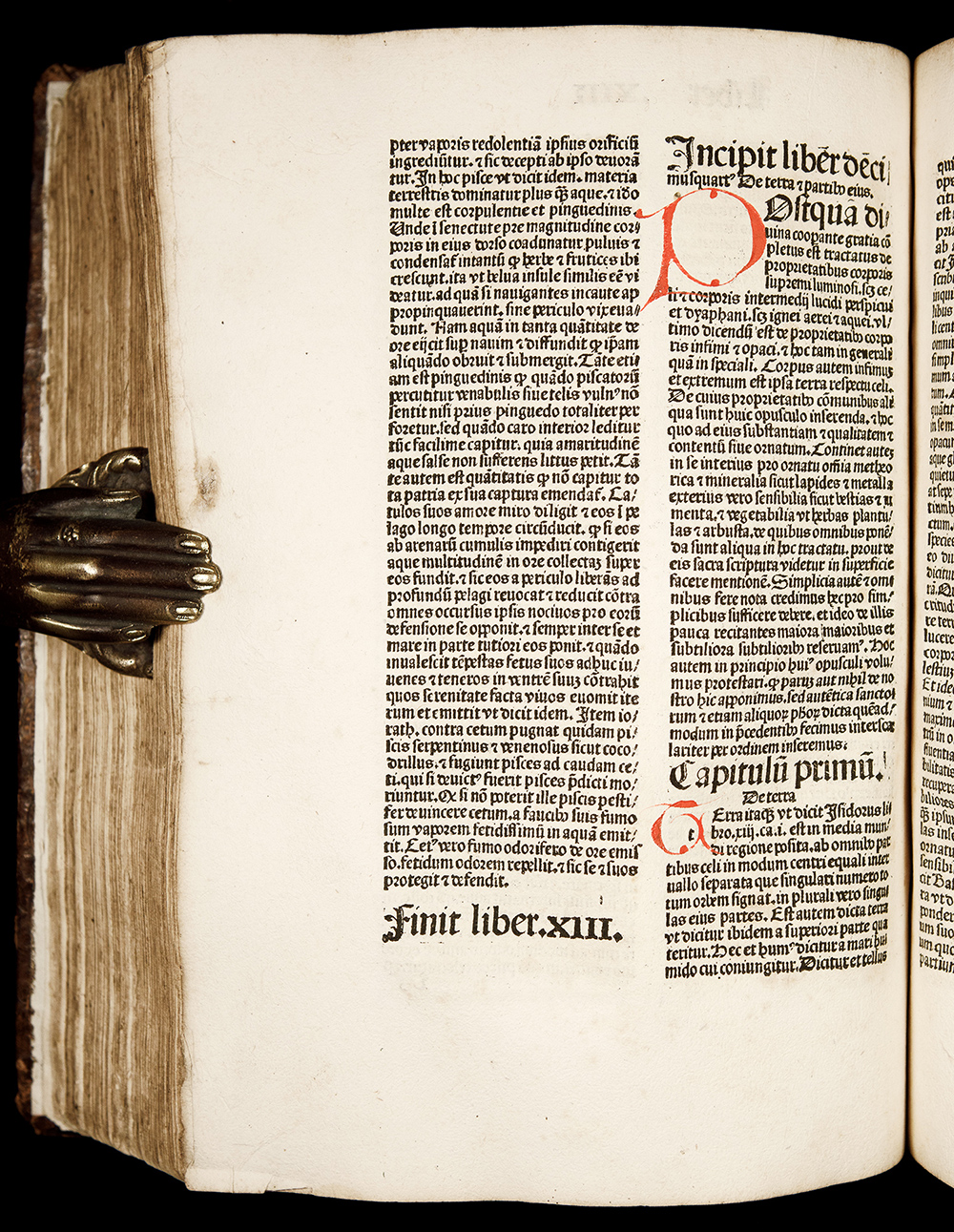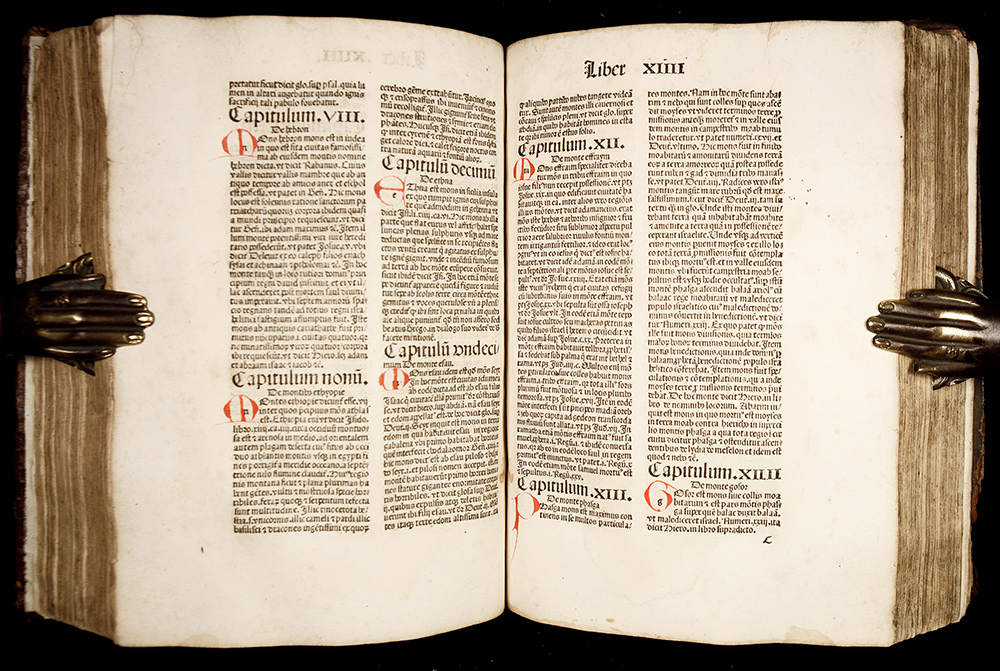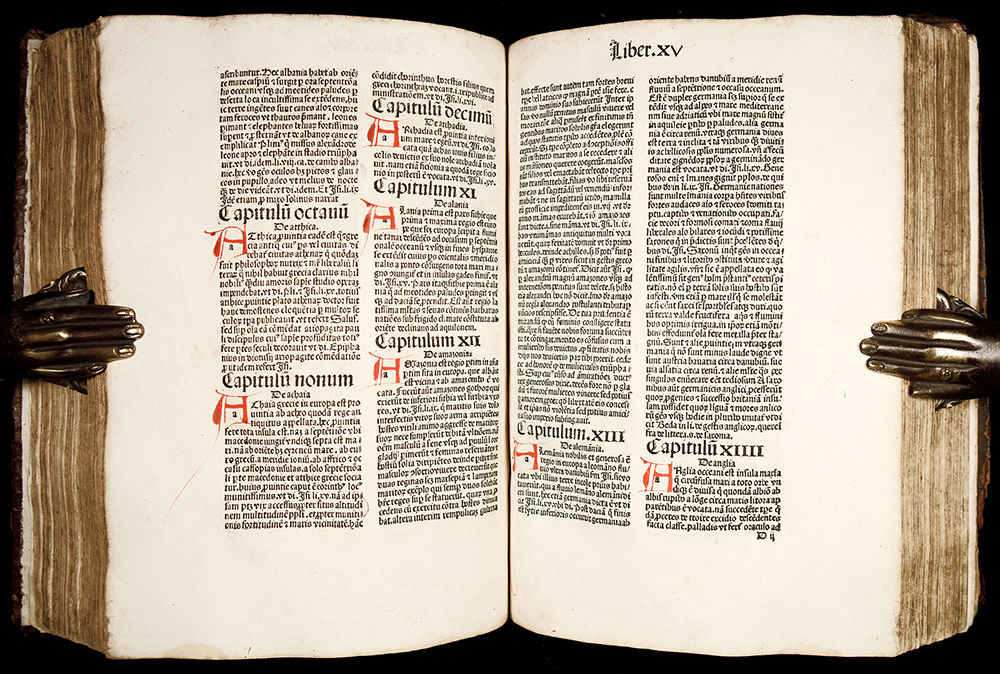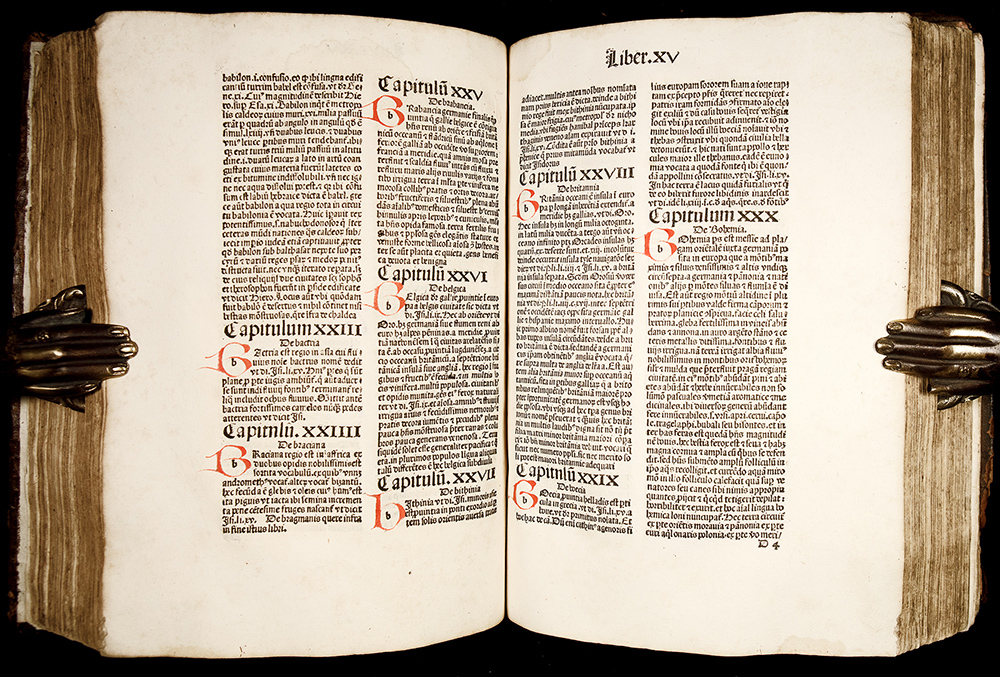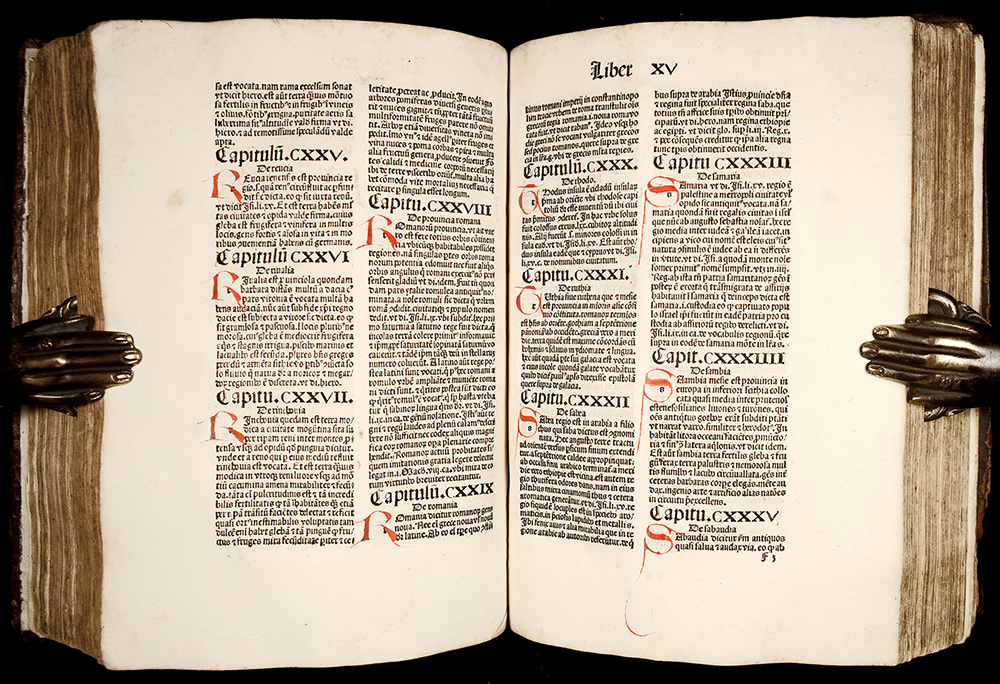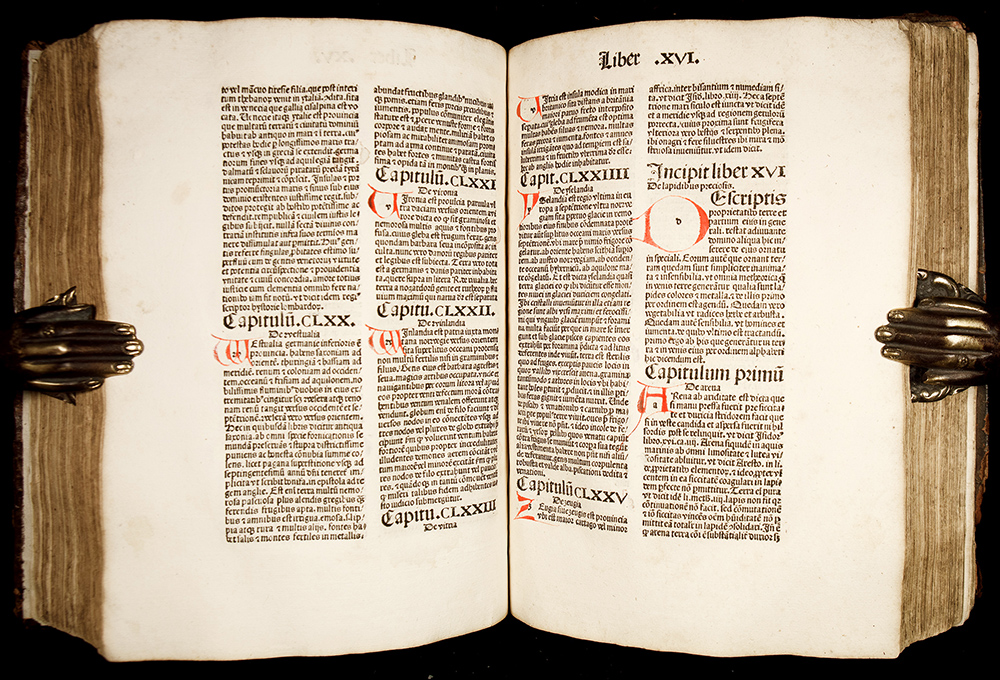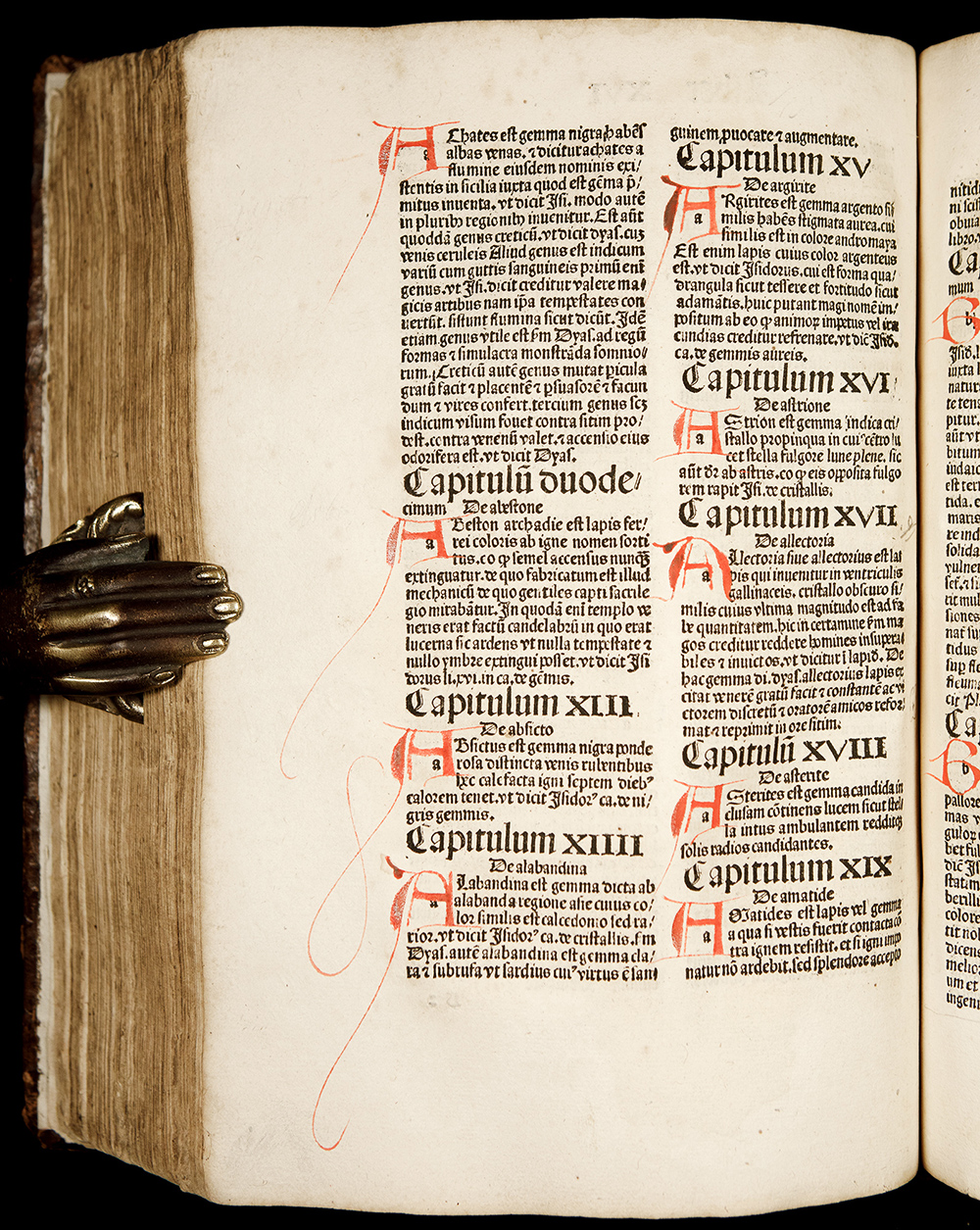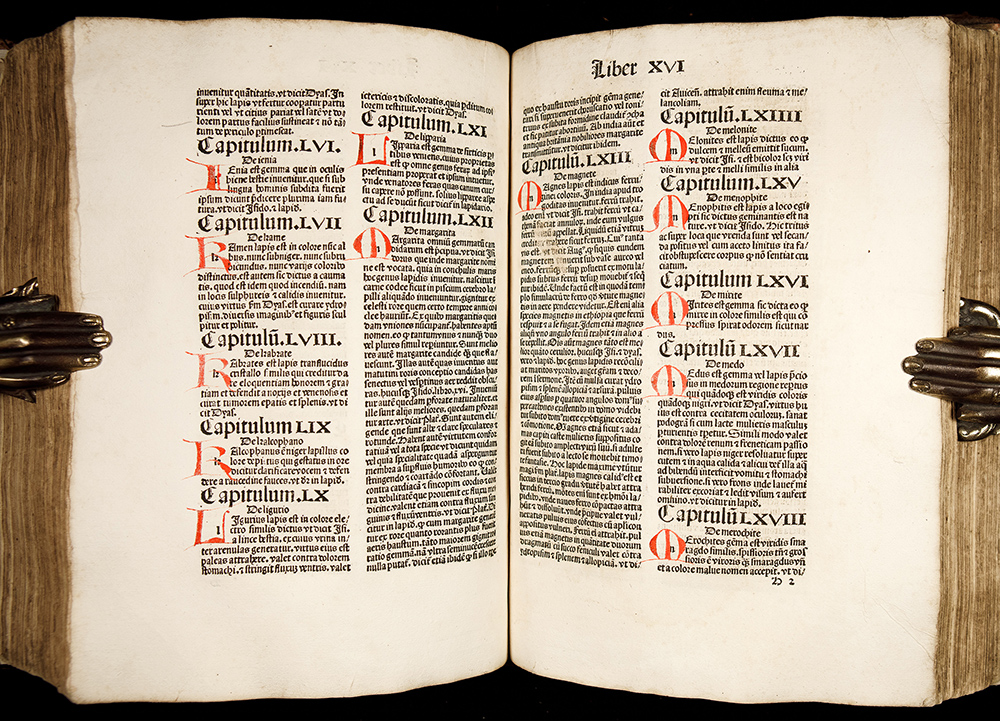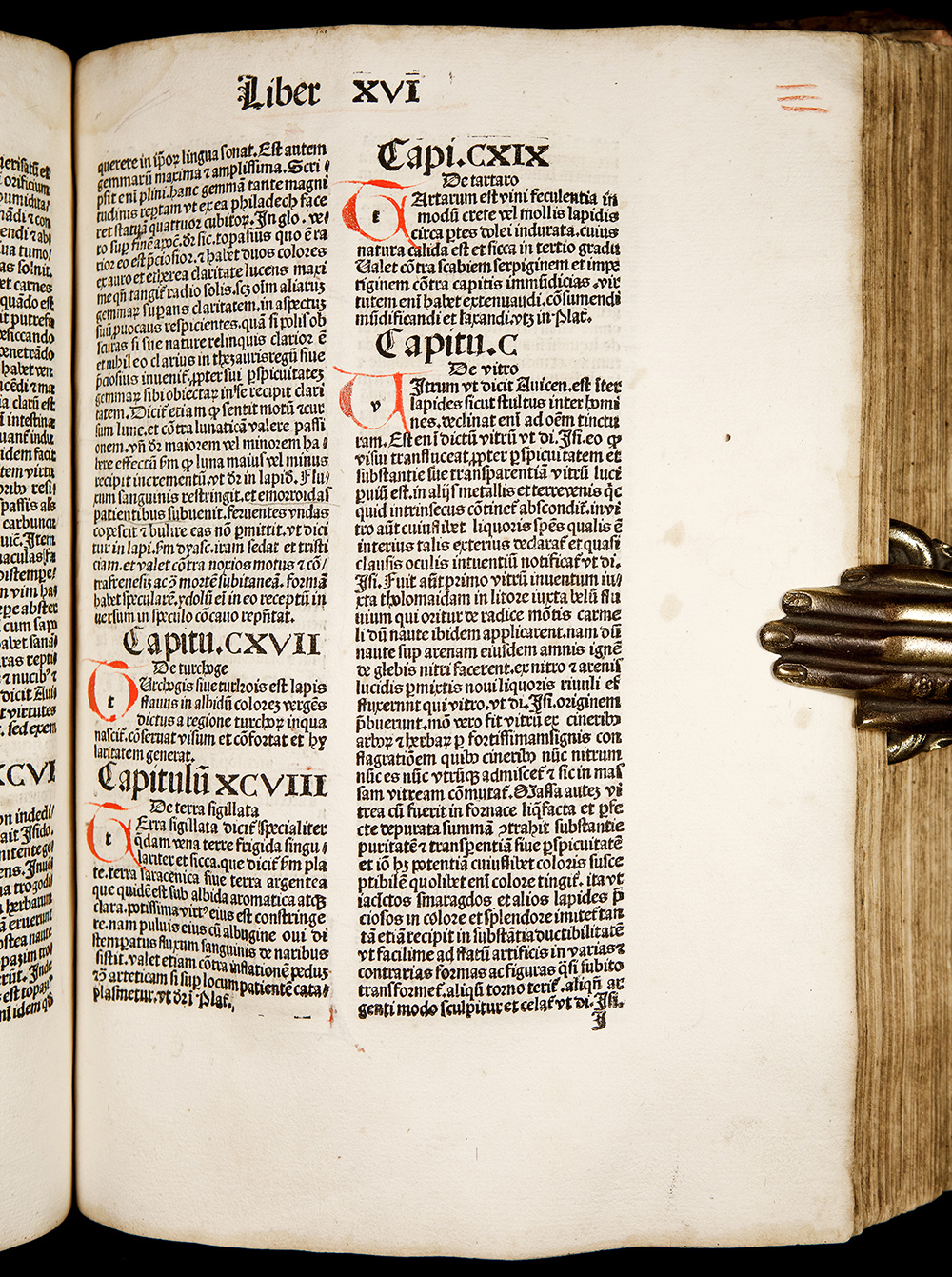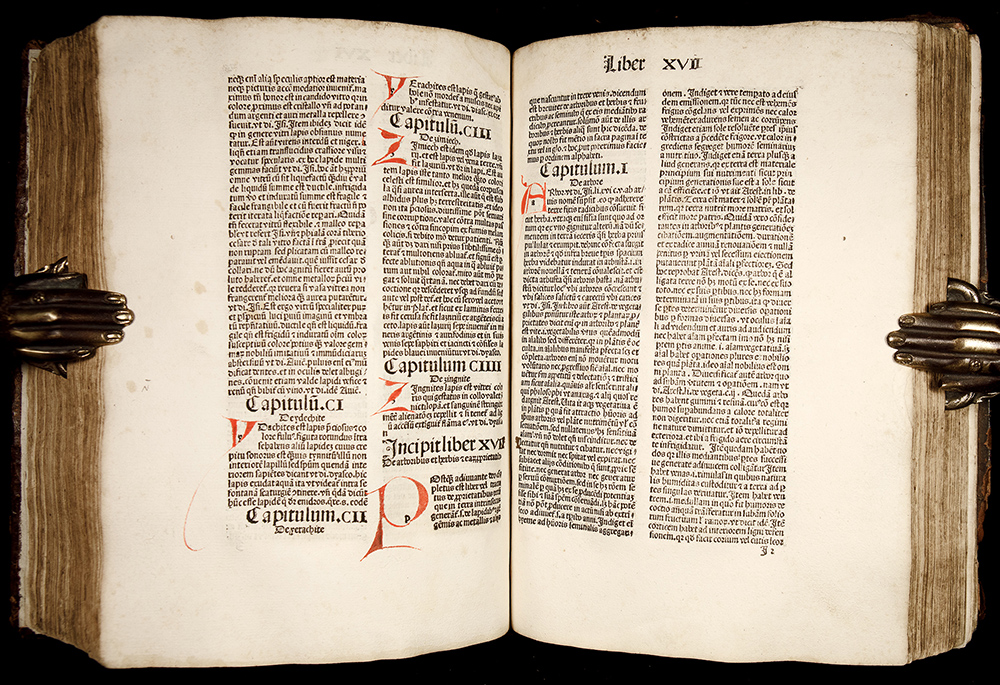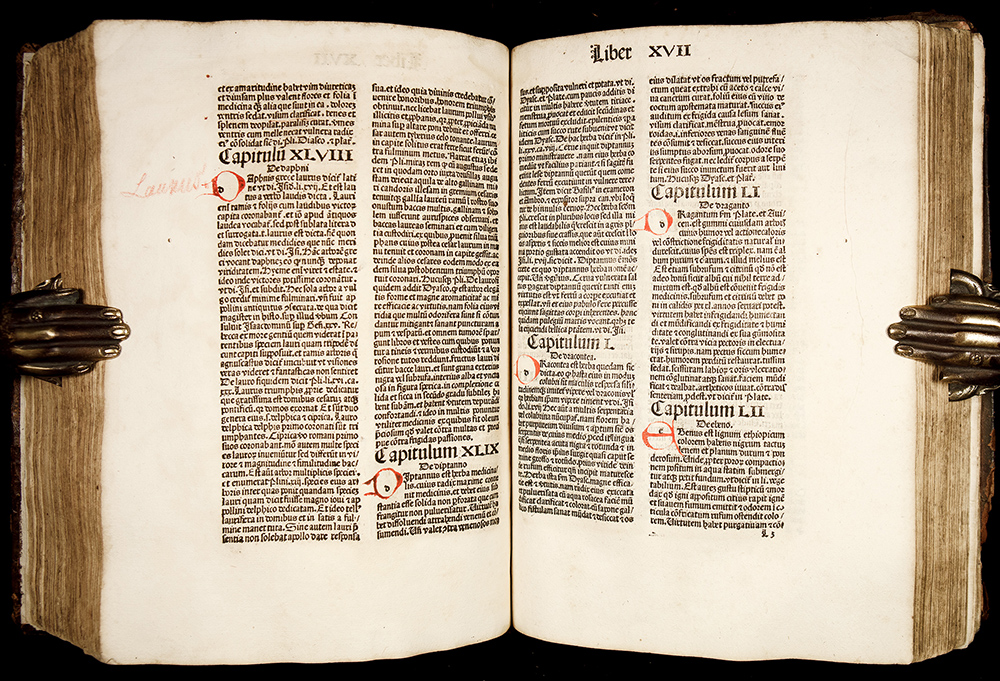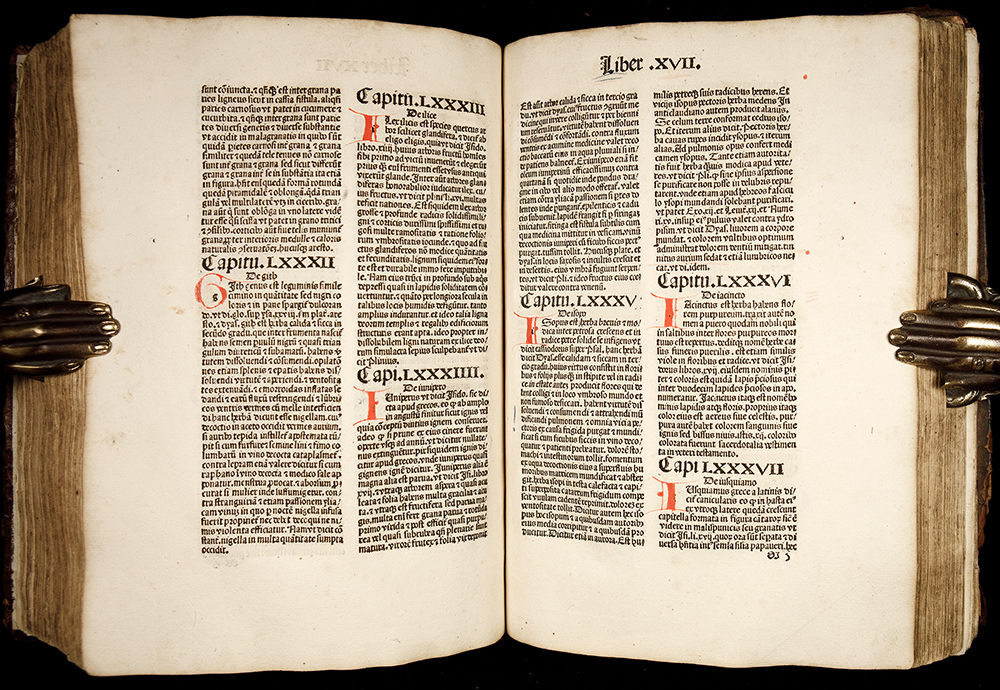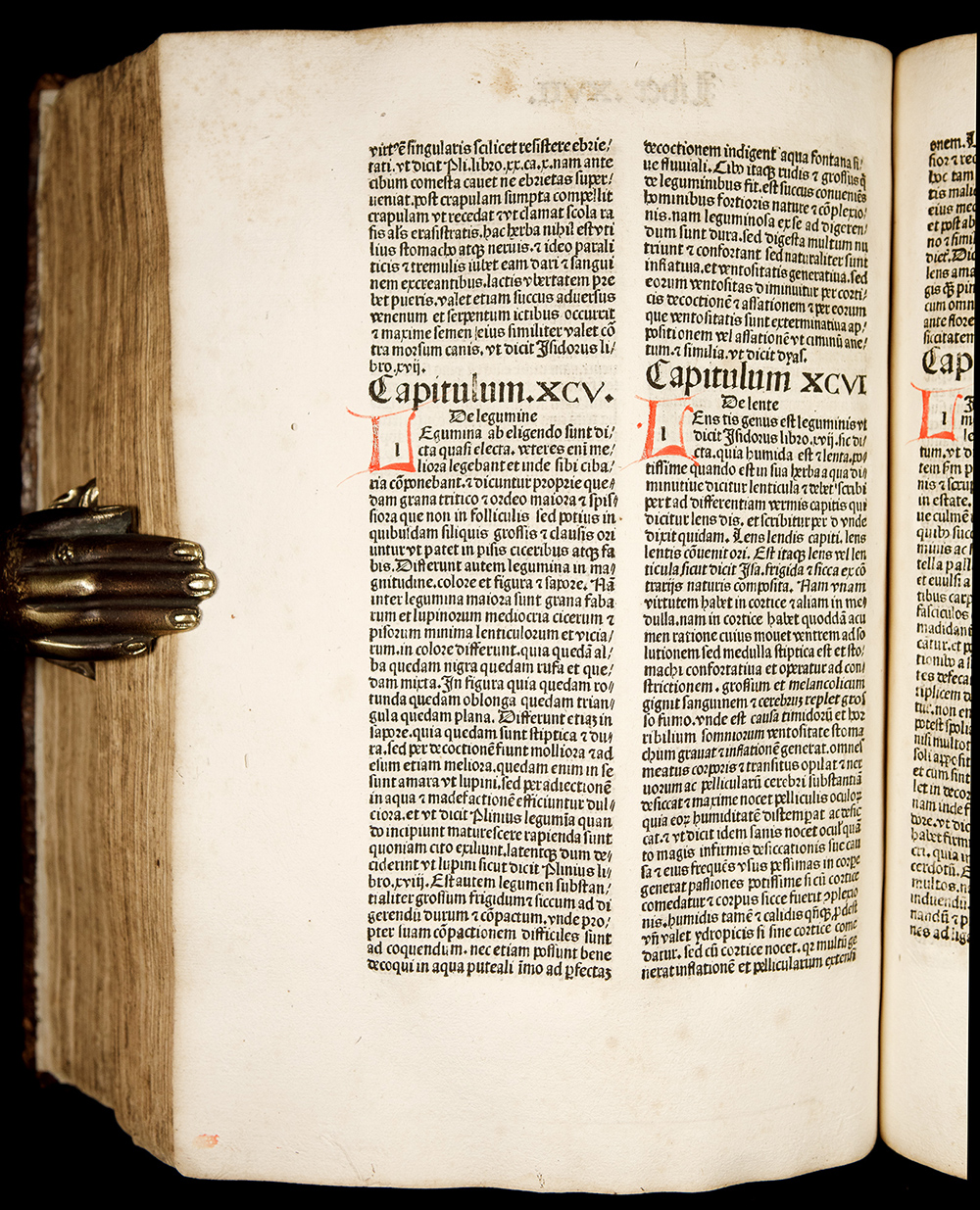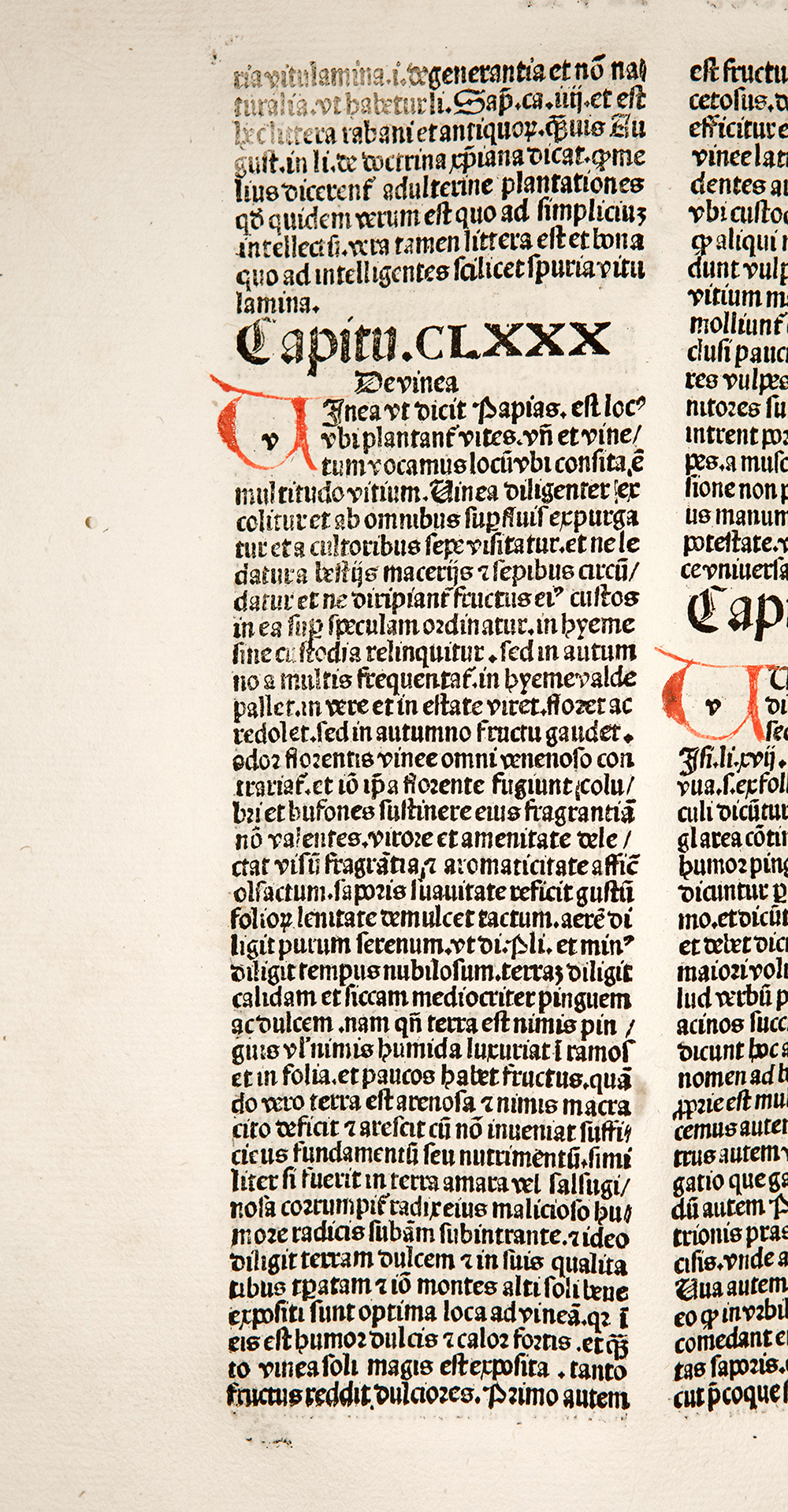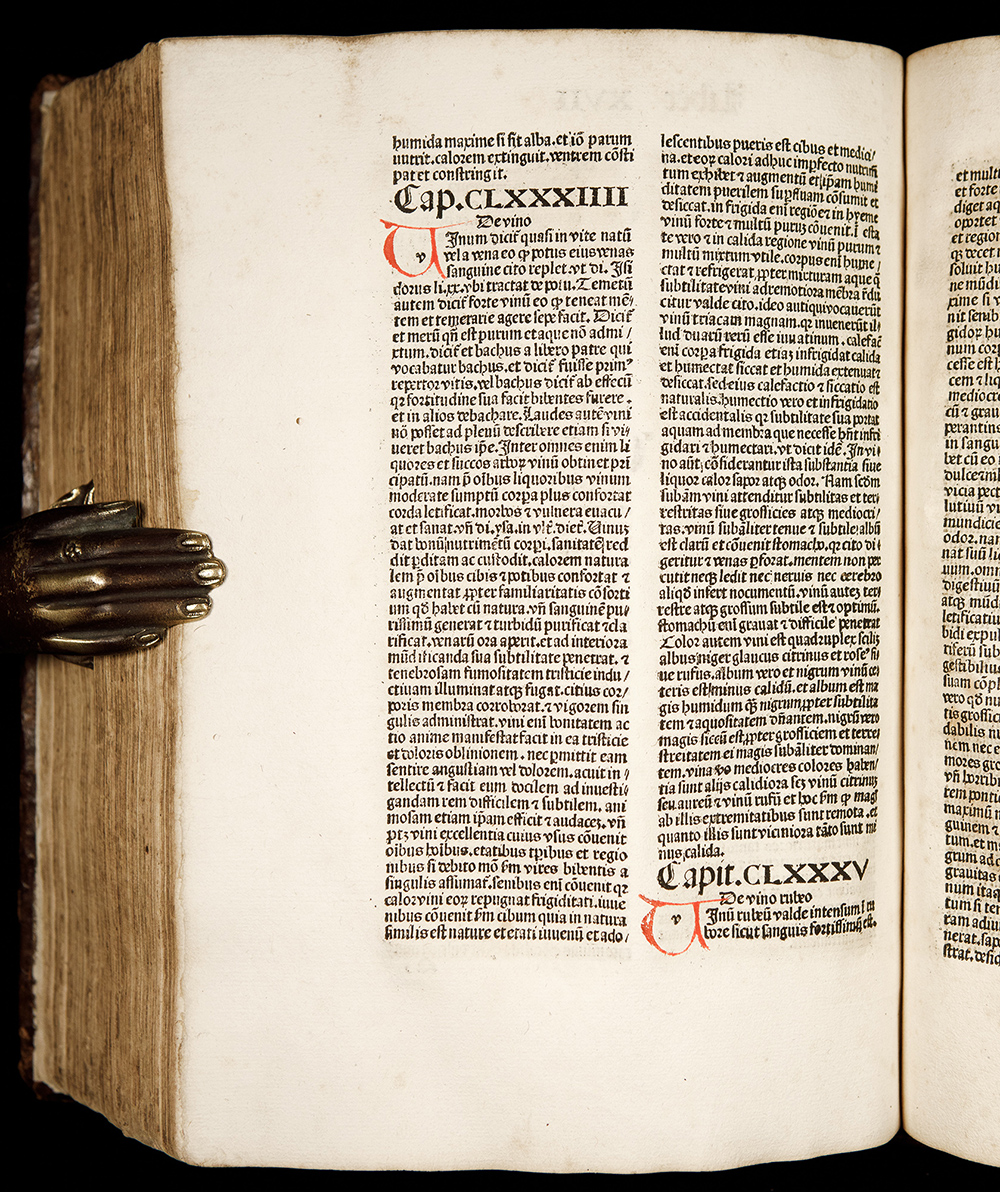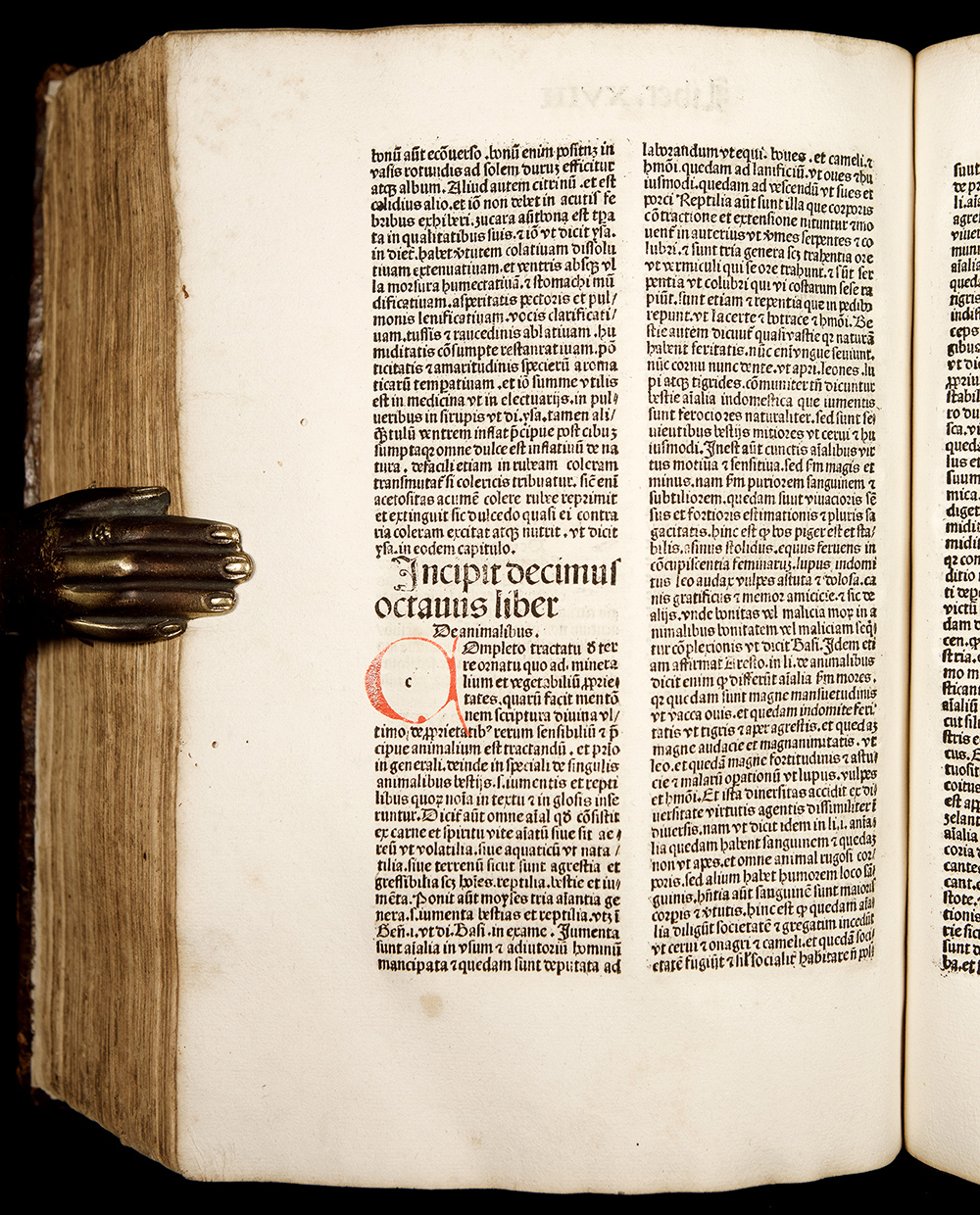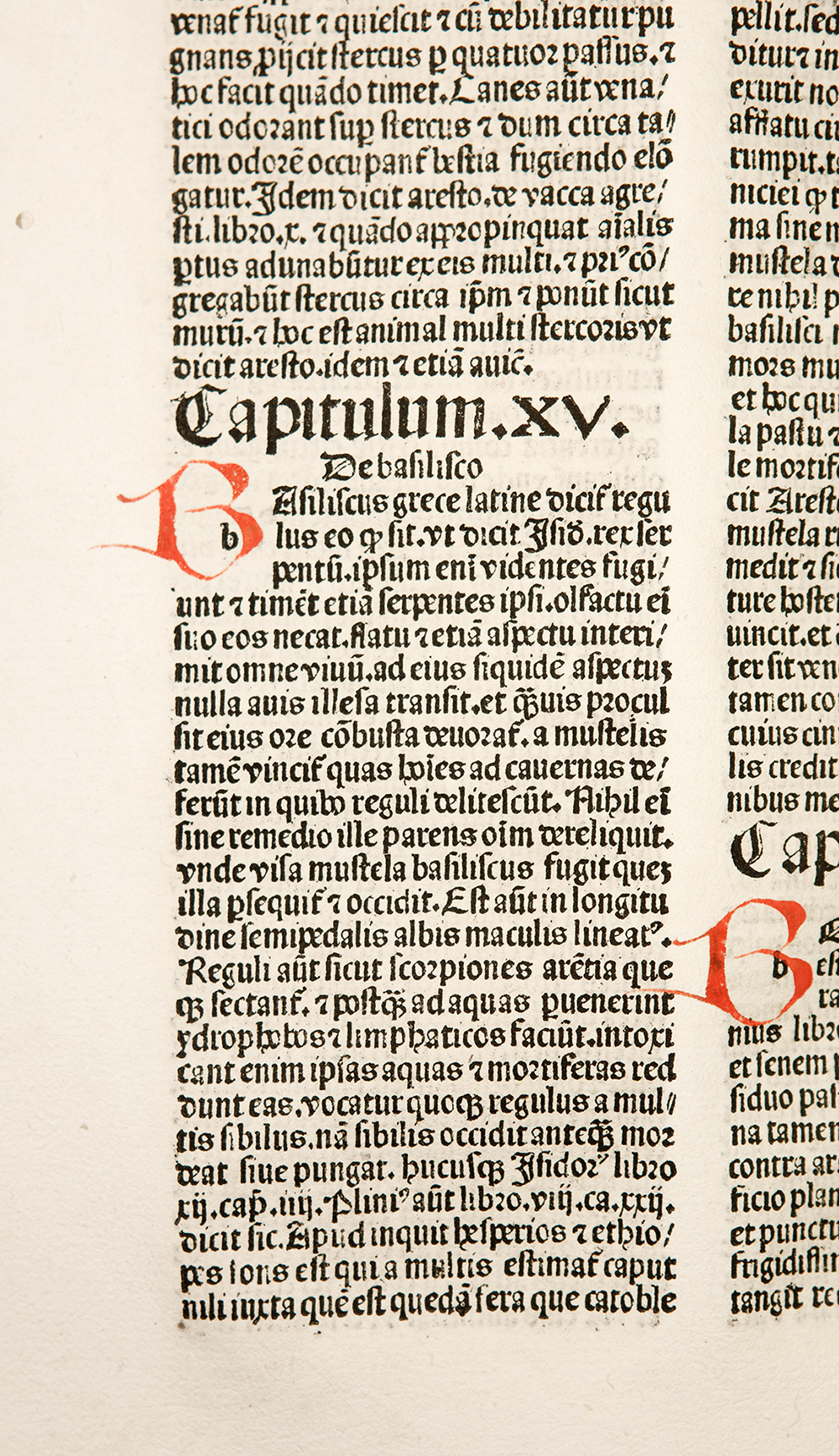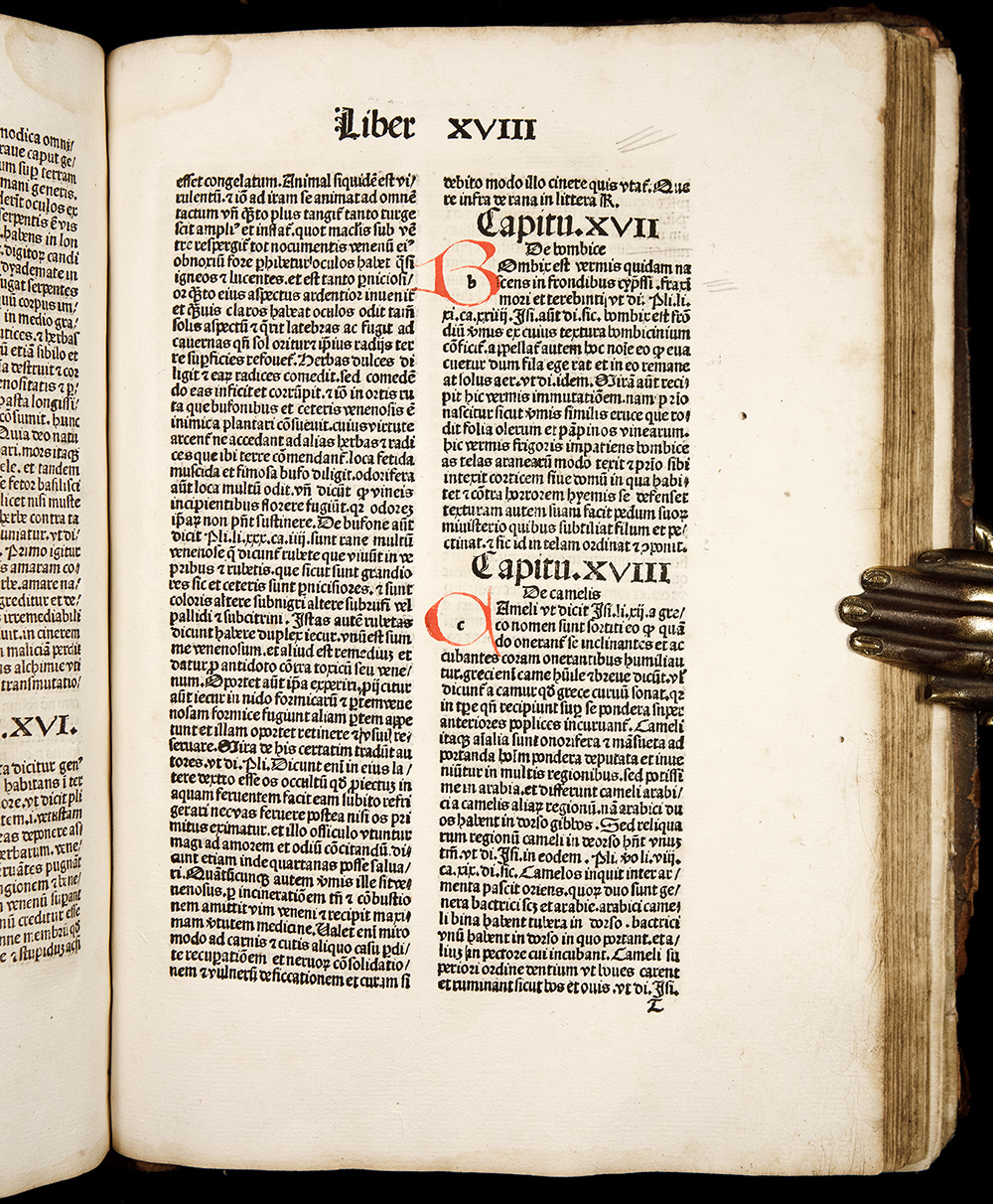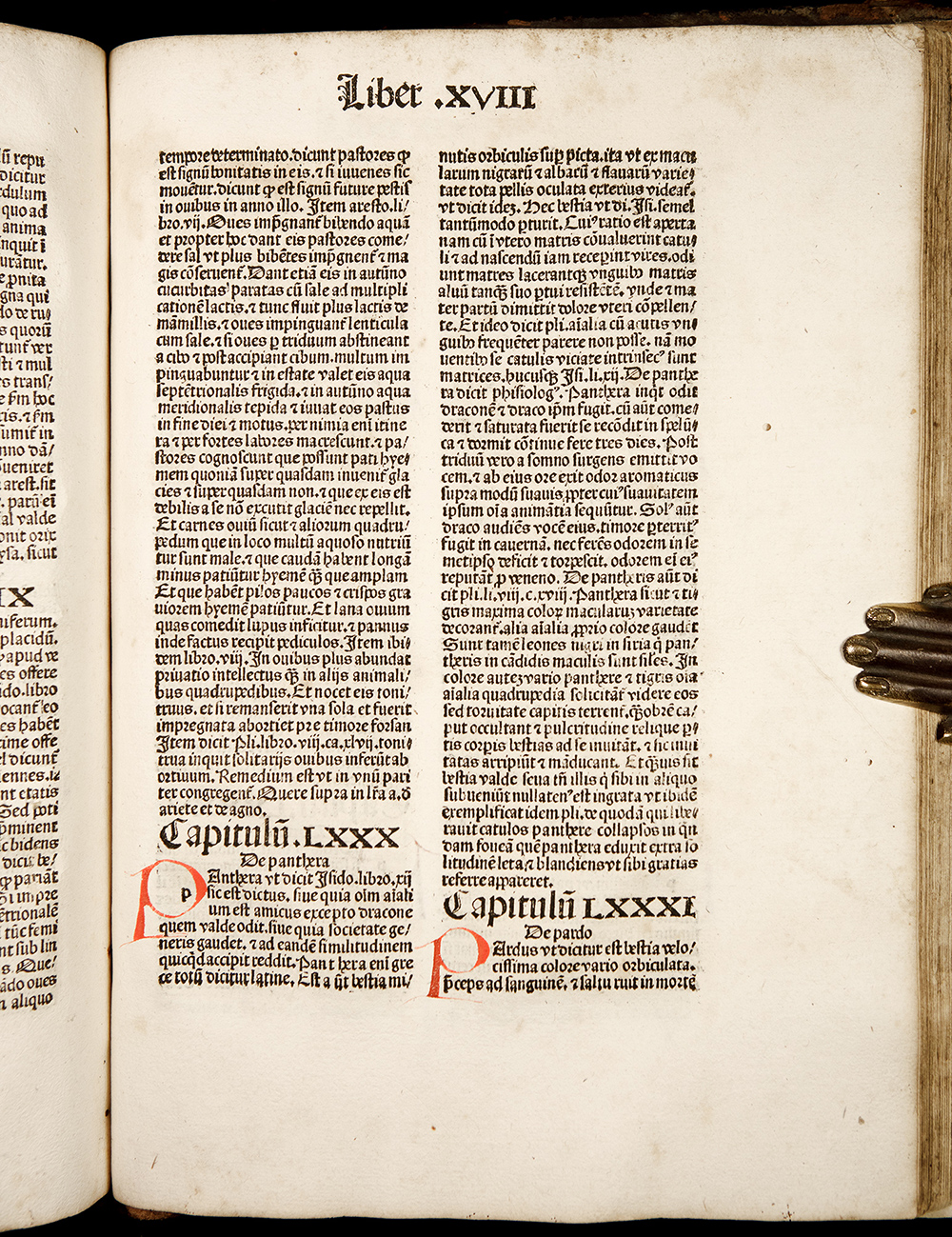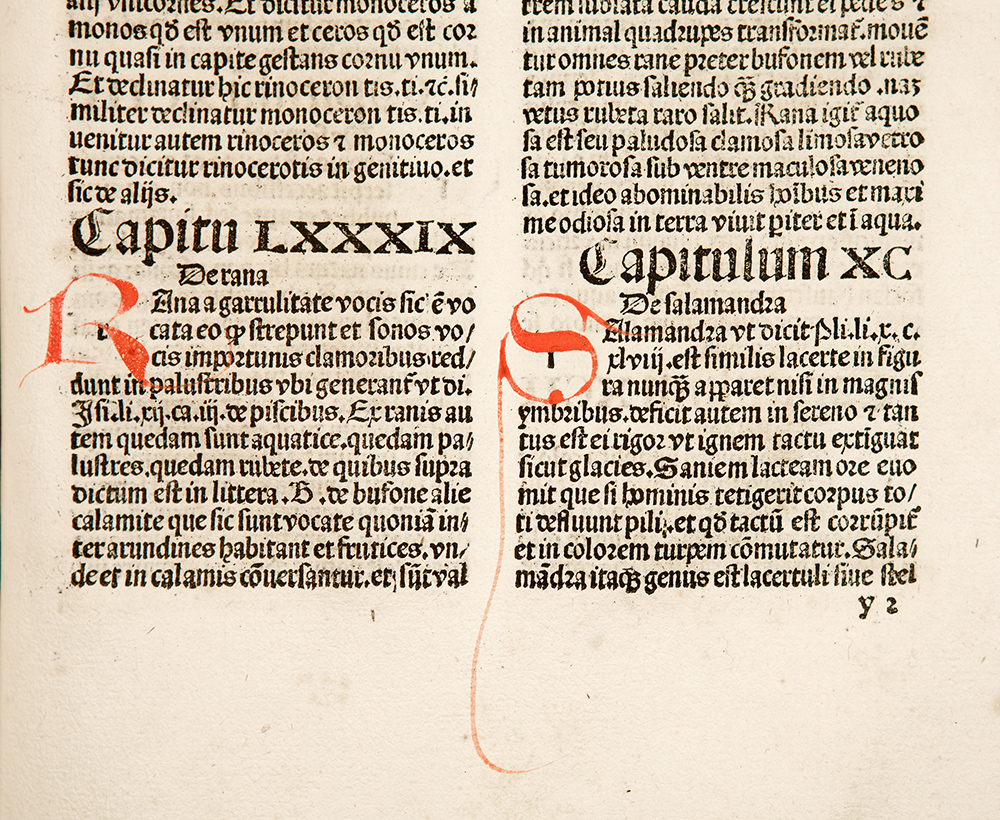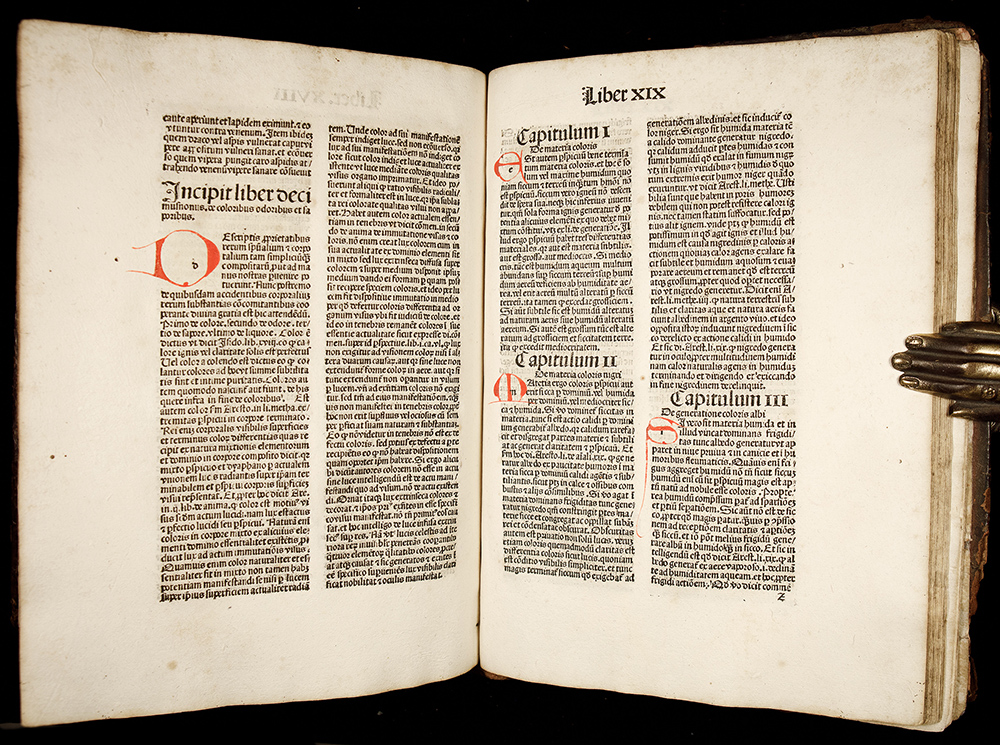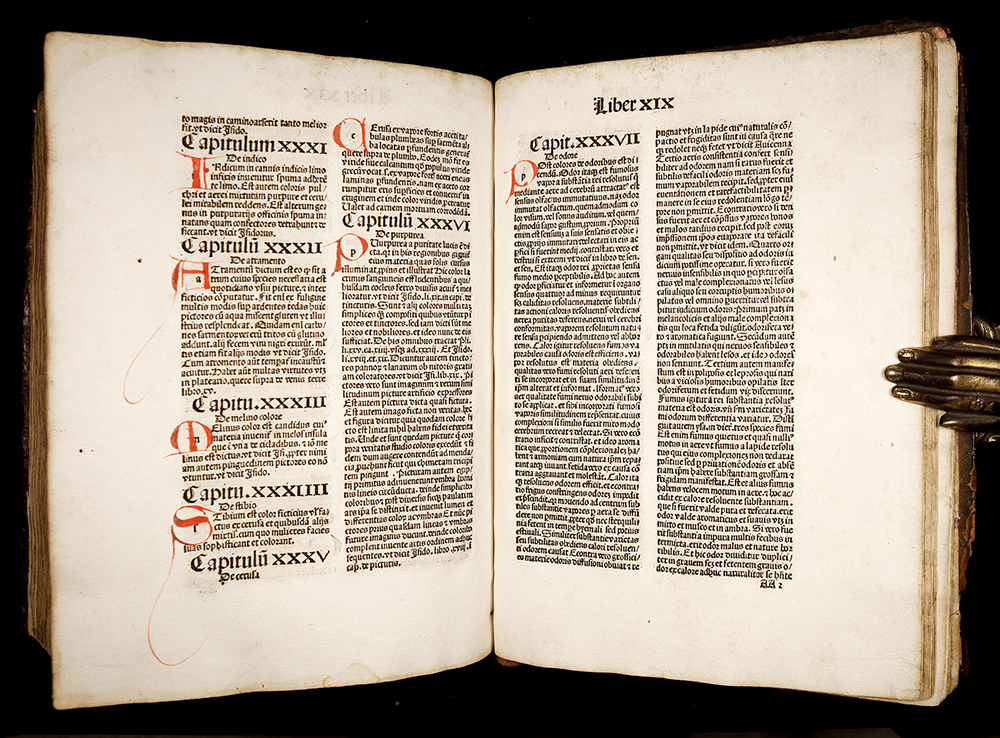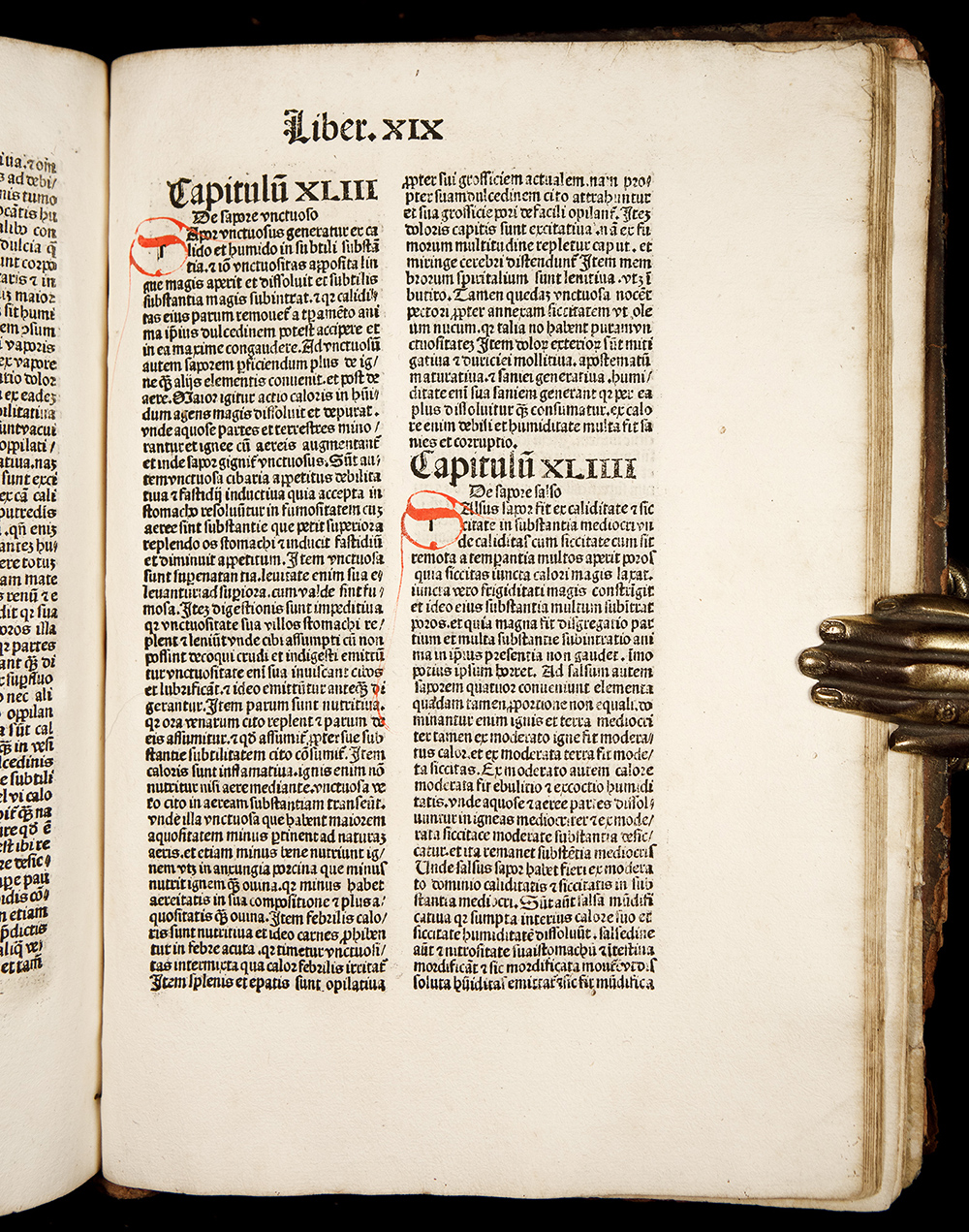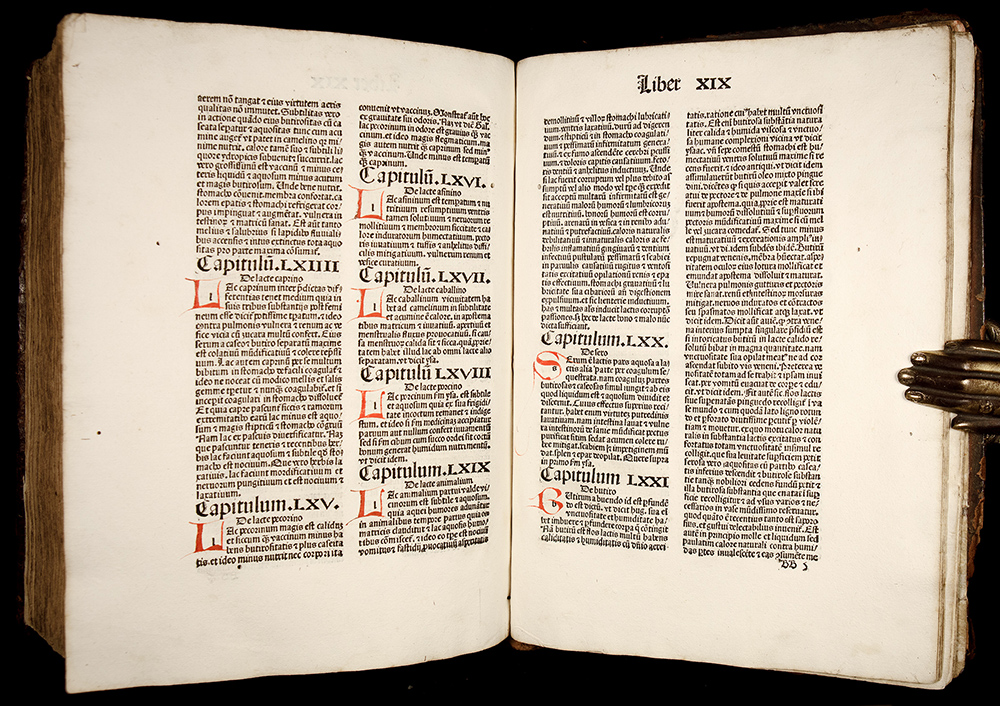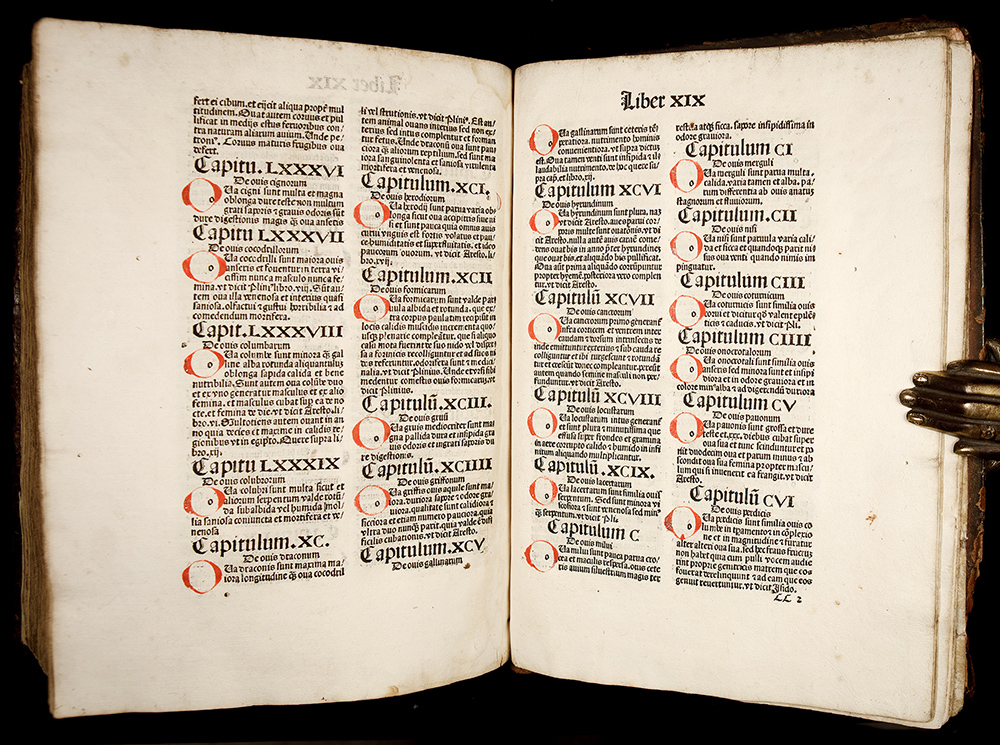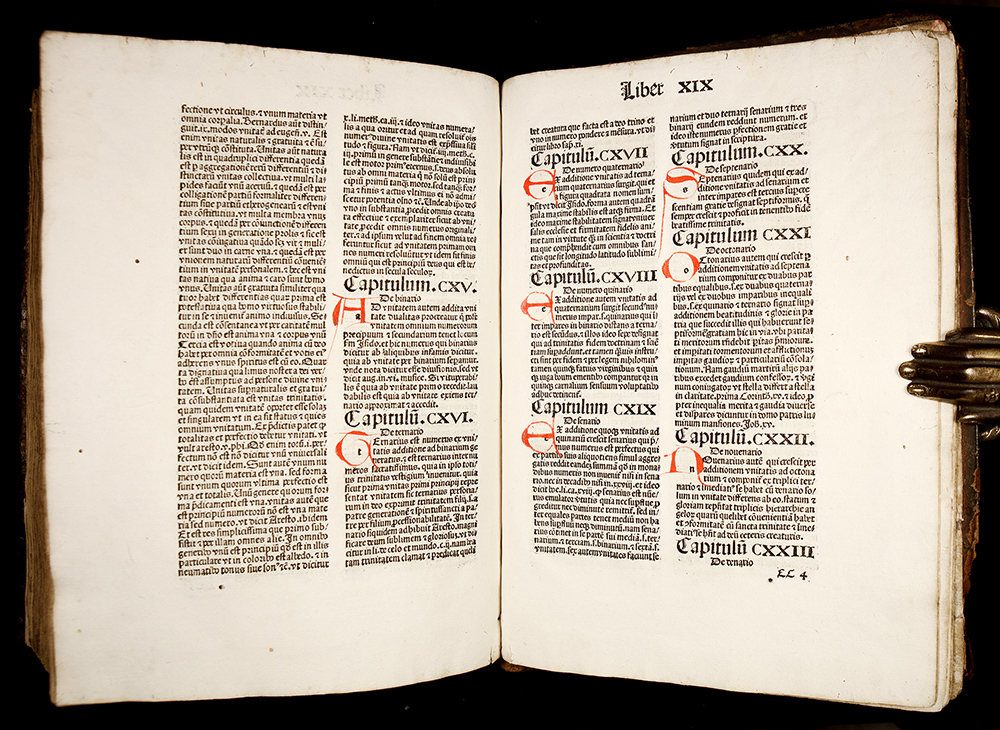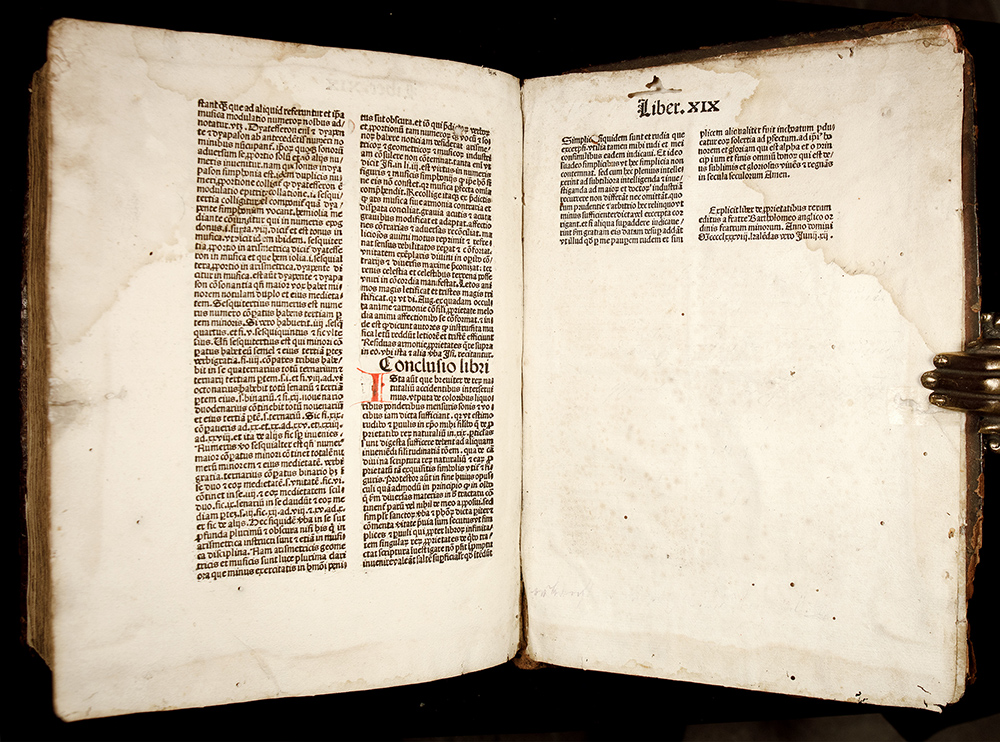
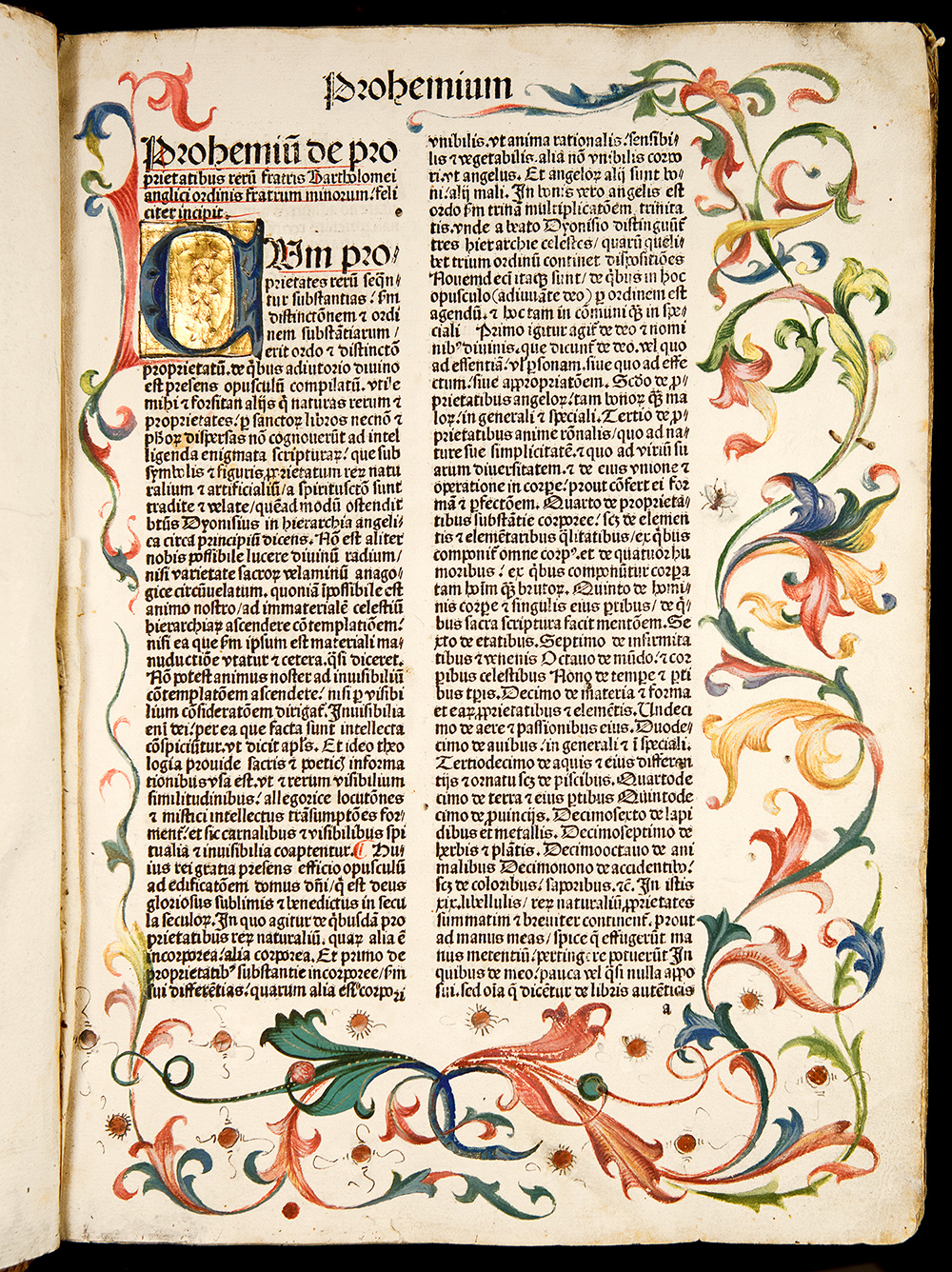
[Early printing - Incunabula - Germany] [Early Medieval Science] [Medieval encyclopedias - Theology - Philosophy - Medicine - Astronomy - Chronology - Zoology - Botany - Geography - Mineralogy] [Medieval Lore]
Bartholomaeus Anglicus
De proprietatibus rerum
Heidelberg: 'Printer of Lindelbach' (i.e. Heinrich Knoblochtzer), 21 May 1488.
SOLD
This is a rare and finely printed incunable edition of Bartholomaeus Anglicus's famous medieval encyclopedia. The first page of text in this copy is embellished with a beautifully illuminated border by a contemporary German artist.
This is the first book from the second press of Heinrich Knoblochtzer, who moved to Heidelberg from Strassburg in the mid-1480s. He was the third earliest printer at Heidelberg, and this 1488 Bartholomaeus was his first work there.
This enduringly popular and influential work is the most extensive compilation of all scientific knowledge available in the 13th century, covering theology, philosophy, medicine, astronomy, chronology, zoology, botany, geography, and mineralogy. It was avidly read by both scholars and laity throughout the late Middle Ages and early Renaissance, well into the 16th century. Anglicus' work has long been recognised as a fundamental text in mediaeval studies, and the first important encyclopedia of the Middle Ages. The book is "still important for its information on political geography and its accounts of natural history." (Stillwell, The Awakening Interest in Science during the First Century of Printing, p. 186)
"We have in it the first important encyclopedia of the Middle Ages and the first in which the works of Greek, Arabian, and Jewish naturalists and medical writers, which had been translated into Latin shortly before, were laid under contribution. Aristotle, Hippocrates, Theophrastus, the Jew Isaac Medicus, the Arabian Haly, and other celebrities are quoted."(Catholic Encyclopedia)
Bartholomaeus Anglicus was born in England (probably in Suffolk) around the turn of the 13th century (before 1302, the exact date is unknown). He is believed to have studied natural sciences and theology at Oxford under Robert Grosseteste, then went to Paris to study and teach at the university there. He joined the newly-established Franciscan Order around 1224 or 1225, but continued to teach in Paris until 1231, when he was sent to teach at the Franciscan school at Magdeburg in Saxonia (Germany).
There around 1245 he compiled the De proprietatibus rerum with the aim of explaining 'the properties of things' to help people understand the Bible. Bartholomaeus's encyclopedia was rapidly accepted as authoritative, becoming an official textbook in Paris in 1284. It was enormously influential in shaping how people understood both the world of the Bible and their contemporary world.
The De proprietatibus rerum was "one of the most widely read books of medieval times. Written by an English Franciscan, Bartholomew, in the middle of the thirteenth century, probably before 1260, it speedily travelled over Europe. It was translated into French by order of Charles V. (1364-81) in 1372, into Spanish, into Dutch, and into English in 1397. Its popularity, almost unexampled, is explained by the scope of the work [...]
"It was written to explain the allusions to natural objects met with in the Scriptures or the Gloss. [However,] it was, in fact, an account of the properties of things in general [...]. Assuming no previous learning, and giving a fairly clear statement of the knowledge of the time, the book was readily welcomed by the class for which it was designed, and by the small nucleus of an educated class which was slowly forming. [...]
"The interest of Bartholomew's work to modern readers is twofold: it has its value as literature pure and simple, and it is one of the most important of the documents by the help of which we rebuild for ourselves the fabric of mediaeval life. [...] The plan on which his work was constructed led Bartholomew in order over the universe from God and the angels - through fire, water, air, to earth and all that therein is. We thus obtain a succinct account of the popular mediaeval theories in Astronomy, Physiology, Physics, Chemistry, Geography, and Natural History, all but unattainable otherwise.
"In the chapter on Mediaeval Society we have not perhaps the daily life of the Middle Ages, but at least the ideal set before them by heir pastors and masters an ideal in direct relationship with the everyday facts of their life. The lord, the servant, the husband, the wife, and the child, here find their picture. Some information, too, can be obtained about the daily life of the time from the chapter on the Natural History of Plants, which gives incidentally their foodstuffs. It is in the History of Animals that the student of literature will find the richest mine of allusions. [...]
"The chief sources of our author's inspiration are notable. He relies on St. Dionysius the Areopagite for heaven and the angels, Aristotle for Physics and Natural History, Pliny's Natural History, Isidore of Seville's Etymology, Albumazar, Al Faragus, and other Arab writers for Astronomy, Constantinus Afer's Pantegna for Medical Science, and Physiologus, the Bestiarium, and the Lapidarium for the properties of gems, animals, etc." (Robert Steele, Introduction to Mediaeval Lore from Bartholomew Anglicus, p.1-6)
De proprietatibus rerum is organized in nineteen books (19 being 12 + 7, the 12 signs of the zodiac plus the seven planets, thus signifying universality. The subjects of these books, respectively, are:
Bibliographic references:
Hain-Copinger 2507; Goff B-139; Pellechet 1874; Klebs, Incunabula scientifica et medica: 149.10; GW 3411; BMC III, 670; Harvard/Walsh 1067-68; Proctor 3130; BSB-Ink. B-97; CIBN B-102.
Physical description:
Chancery Folio, text-block measuring approximately 28cm x 20.5cm. Bound in contemporary blind-stamped calf over wooden boards (restored): the rear cover being the original late 15th-century German calf decorated in blind with a large central panel divided by vine-like lines into lozenge-shaped compartments each filled with a “pineapple” tool, and with evidence of metal attachments (two clasps, four corner-piece bosses and a larger diamond-shaped centerpiece boss) all now lost; the front cover and spine appear to be a somewhat later reconstruction, rather tastefully done reusing old material, presumably ‘recycling’ blind-stamped calf from another binding (probably early 16th-century) with a simple geometric cross-hatched ruling of the central panel.
325 unnumbered leaves (forming 650 pages).
Collation: π6 [-π1] a8 b-p6 q8 r-t6 v-y A-C8.6.6 D8 E6 F-L8.6.6 M8 N-P6 Q-Z AA8.6.6 BB8 CC6 DD8.
Complete, except for π1 with a plain 2-line title in recto and blank verso.
The entire text and the Tabula are present and complete.
Printed in double column; 50 lines per column, plus headline. Text in gothic letter, Types: 1:160G (titles, headlines, etc.), 4:80aG (text). Capital spaces, many with printed guide-letters, filled throughout with red Lombard initials supplied in contemporary hand, some with long marginal extensions. Opening page of text with the leading 7-line initial 'C' illuminated in liquid gold and colors, and a finely illuminated 4-sided border of acanthus leaves and flowers and incorporating a charmingly and quite realistically painted fly in the outer margin.
Includes a detailed table of contents ('Tabula generalis', leaves π2r-6r) and a list of the sources (authors) used by Bartholomaeus Anglicus (leaf π6v).
Colophon on DD8r (verso blank).
Provenance:
Oskar Sachsperger (1883 - 1965), an Austrian artist, with his possession note and a bookplate to front pastedown, and a his small collector’s ink-stamp to bottom margin of π2r. Both the bookplate and stamp were clearly designed by Sachsperger himself.
Condition:
Very Good antiquarian condition. Binding rubbed, rear cover scuffed with some areas worn through, exposing wooden board; several small wormholes; clasps and metal bosses perished. Several leaves with some damp-staining to top margin (mostly just confined to margins, only entering text in the final quire). Intermittent light to moderate browning to several leaves. Occasional light soiling, mostly marginal. One page with a small manuscript marginal note, a few pages with small marginal markings indicating passages of interest to the reader. Several marginal wormholes, mostly to beginning and end of volume, mostly confined to blank margins and only very rarely entering printed area, but without affecting legibility. A couple of marginal paper-flaws (not affecting text); minor marginal repairs to 3 final leaves (not affecting text). In all, an attractive, genuine (unwashed and unpressed), wide-margined example of a rare edition of one of the most desirable medieval works, with an exceedingly pleasant illuminated border.
